
Pre-Broadway performances
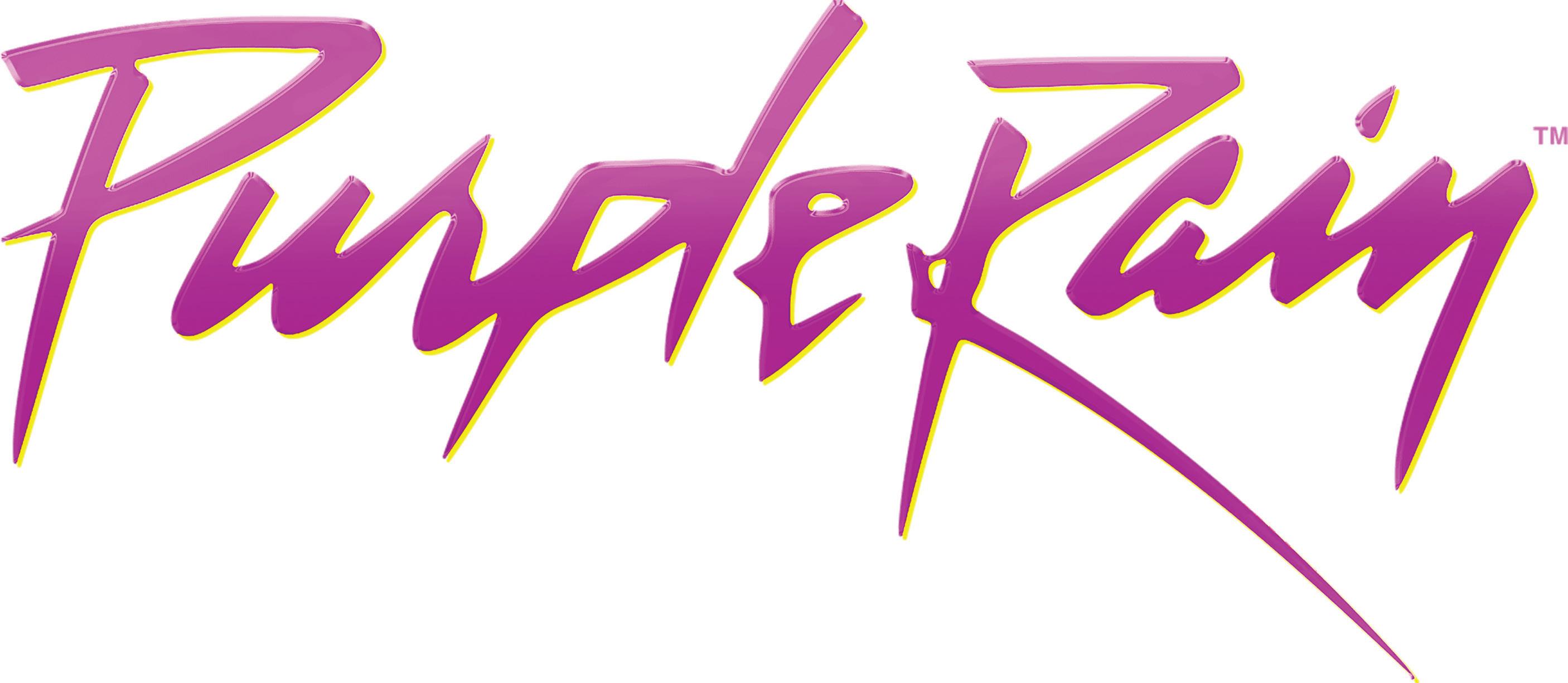


Pre-Broadway performances

State Theatre, Minneapolis October 16 – November 23, 2025
The world premiere stage adaptation of PRINCE’S legendary film and album PURPLE RAIN™ comes to Hennepin Arts’ historic State Theatre October 16-November 23, 2025. The world premiere
musical adaptation, PURPLE RAIN, brings to life the electrifying, fictional journey of “The Kid,” a talented but troubled young musician trying to make it in the Minneapolis club scene. As he contends with a tumultu-
ous home life, a rival band, and an unexpected romance with an aspiring young singer, “The Kid” fights to find his voice and seize his moment in the spotlight. Based on the origi-
The Saint Paul Federation of Educators (SPFE) last week endorsed incumbent Mayor Melvin Carter, citing his steadfast leadership and commitment to Saint Paul’s students, educators, and families. This latest endorsement cements what is now Mayor Carter’s strongest and most united campaign coalition to date, Carter’s campaign said in a press statement.
First elected in 2018 as the city’s 46th and first African-American mayor Melvin Carter is a fourth-generation Saint Paul resident.
Carter has built a reputation for elevating equity and community empowerment. Carter lead successful efforts to raise the city’s minimum wage to $15 per hour and he created the Office of Financial Empowerment to address financial stability and community wealth building. Under his administration, Saint Paul brought back its Affordable Housing Trust Fund, and expanded support for immigrants and refugees. His administration implemented what it described as a Community-First Public Safety framework to address root causes of public safety challenges.
The city tripled free programming in recreation centers and eliminated late fines in public libraries to increase accessibility and created CollegeBound Saint Paul, an innovative initiative that provides every child born in the city with a $50 college savings account. Saint Paul also launched its People’s Prosperity Guaranteed Income Pilot Program to support low-income families.
With the SPFE endorsement, Carter’s team says
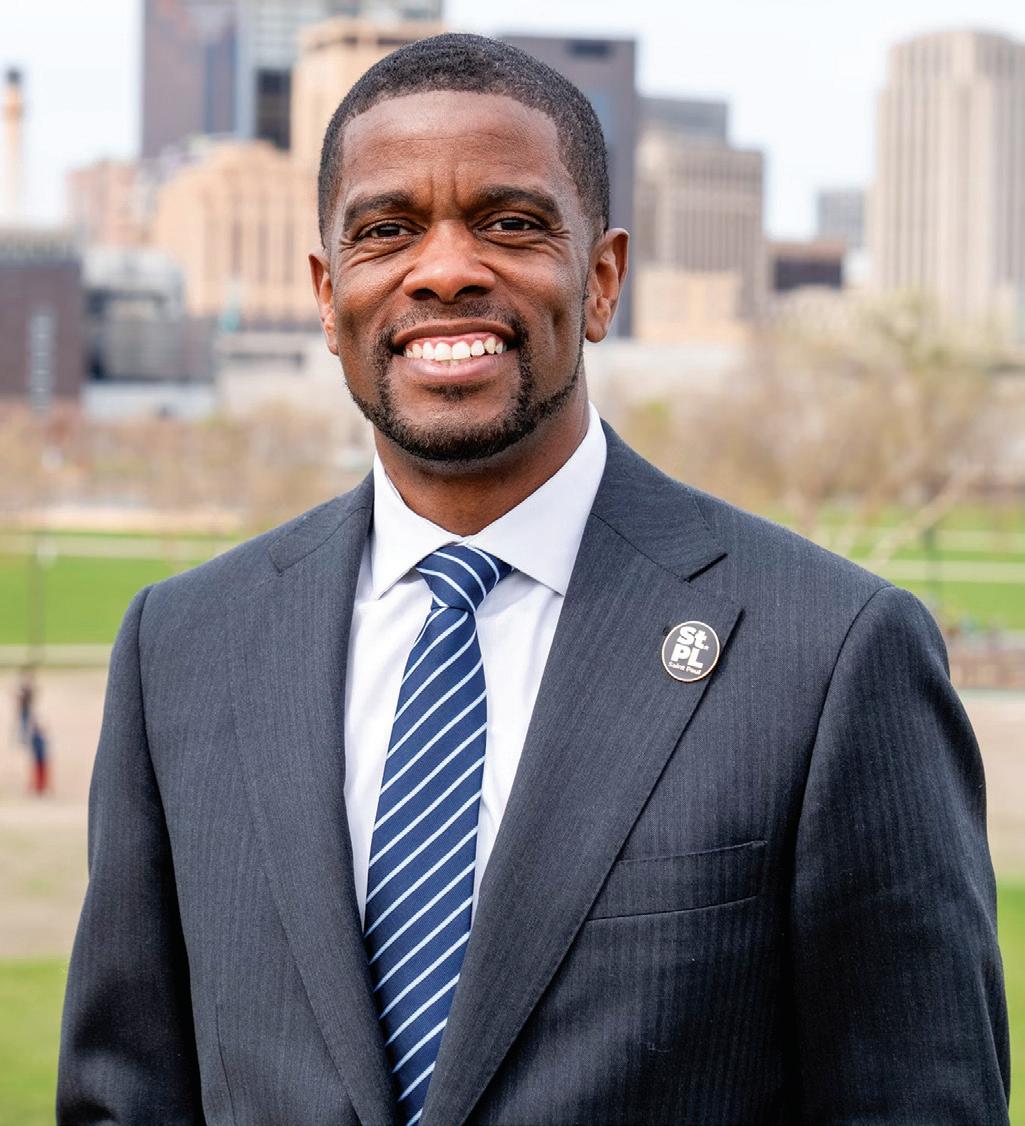
it has built his most formidable slate of labor support ever, securing endorsements from the Minnesota Nurses Association (MNA), Carpenters, SEIU, IUPAT District Council 82, Steamfitters/Pipefitters Local 455, Sprinkler Fitters Local 417, Plumbers Local 34, and IBEW Local 110.
“This campaign reflects the energy and vision of our entire community,” said Carter. “The support of educators, alongside labor, environmental advocates, and faith leaders shows that Saint Paul’s progressive movement is united in our shared vision for a more just and more equitable city.”
Carter has also received endorsements from Governor Tim Walz, Lt. Governor Peggy Flanagan, Attorney Gen-
eral Keith Ellison, U.S. Senator Tina Smith, and U.S. Senator Amy Klobuchar, as well as City Council Members: Johnson, Coleman, Jost, and Bowie Faith in Minnesota, Sustain Saint Paul, the Sierra Club, and Move MN Action endorsed Carter.
Carter says he is entering the final stretch of the campaign in his “best electoral position ever,” claiming the broad base of support across every sector of the city underscores his position as the clear choice for Saint Paul’s future. Carter said the campaign will look to build momentum by hosting field events with Senator Tina Smith, Lt Governor Peggy Flanagan, and other prominent DFLers.
nal screenplay by Albert Magnoli and William Blinn, this pre-Broadway debut is directed by Tony Award® nominee Lileana Blain-Cruz. It features a book by Tony Award winner and Pulitzer Prize finalist Bran-
den Jacobs-Jenkins with music supervision, arrangements, and orchestrations by Tony Award winner Jason Michael Webb and choreography by Ebony Williams. Longtime Prince collaborators Bobby Z and Morris
Hayes join the award-winning creative team as Prince Music Advisors.
The Center for Broadcast Journalism (CBJ) last week announced the appointment of media veteran Harry Colbert Jr. as its new Vice President. A respected figure in the journalism industry, Colbert will begin his tenure in November 2025, bringing a wealth of expertise and a vision for innovative programming that aligns with CBJ’s mission. Answering the urgent need and call to elevate, develop, and preserve independent Black media and its makers is among the top priorities for the organization.
Colbert will be responsible for shaping the editorial and programming vision of the organization, ensuring that the strategy remains bold, innovative, and true to CBJ’s commitment to advancing journalism. His extensive experience will also be instrumental in enhancing the capabilities of Power 104.7 FM, CBJ's broadcast radio station.
“Harry will provide steady leadership for our organization. His guidance will not only help us maintain our momentum but also promote continued growth and success, said Georgia Fort, President of CBJ. She said Colbert’s values align with CBJ’s mission to mobilize the next generation of journalists through rich reporting experience, education, and meaningful connections aimed at enhancing representation in media.
“As a purpose-driven journalist, Colbert embodies a community-first value system that aligns perfectly with CBJ’s

objectives,” CBJ said in announcing the appointment.
A former managing editor at MinnPost and editor-in-chief at North News— where he led the publication to receive three Minnesota Society of Professional Journalists (SPJ) awards and five first-place honors at the 2021 Minnesota Newspaper Association (MNA) awards—Colbert has a proven track record of excellence in journalism. His accolades include additional SPJ awards, four MNA awards, three National Newspaper Publishers Association Merit Awards, and three nominations for the National Association of Black Journalists Salute to Excellence.
Colbert served as the managing editor of Insight News and has contributed col-
umns to various publications, including the Congressional Black Caucus Foundation’s The Village. Colbert is also an established presence in the media, having appeared on MSNBC’s “The Last Word with Lawrence O’Donnell,” and having been featured in Variety and The Independent.
Colbert’s has served as an instructor of print and radio journalism for several organizations, including the Greater St. Louis Association of Black Journalists and ThreeSixty Journalism. Additionally, he has taught at Minneapolis’ North Community High School and Camden High School, helping to shape the next generation of journalists. He is also a former Diversity Fellow at the University of Minnesota’s Hubbard School of Journalism.
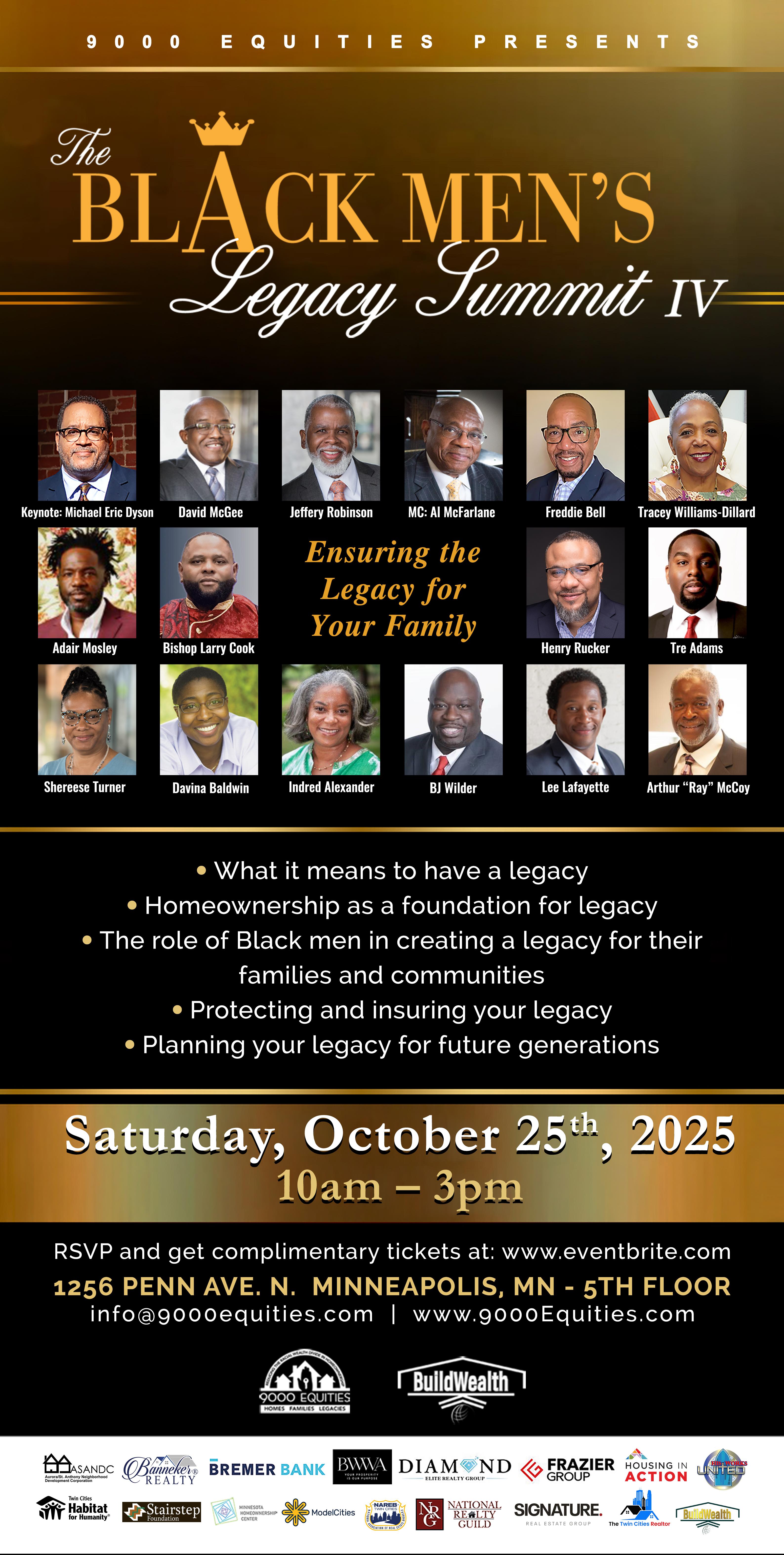

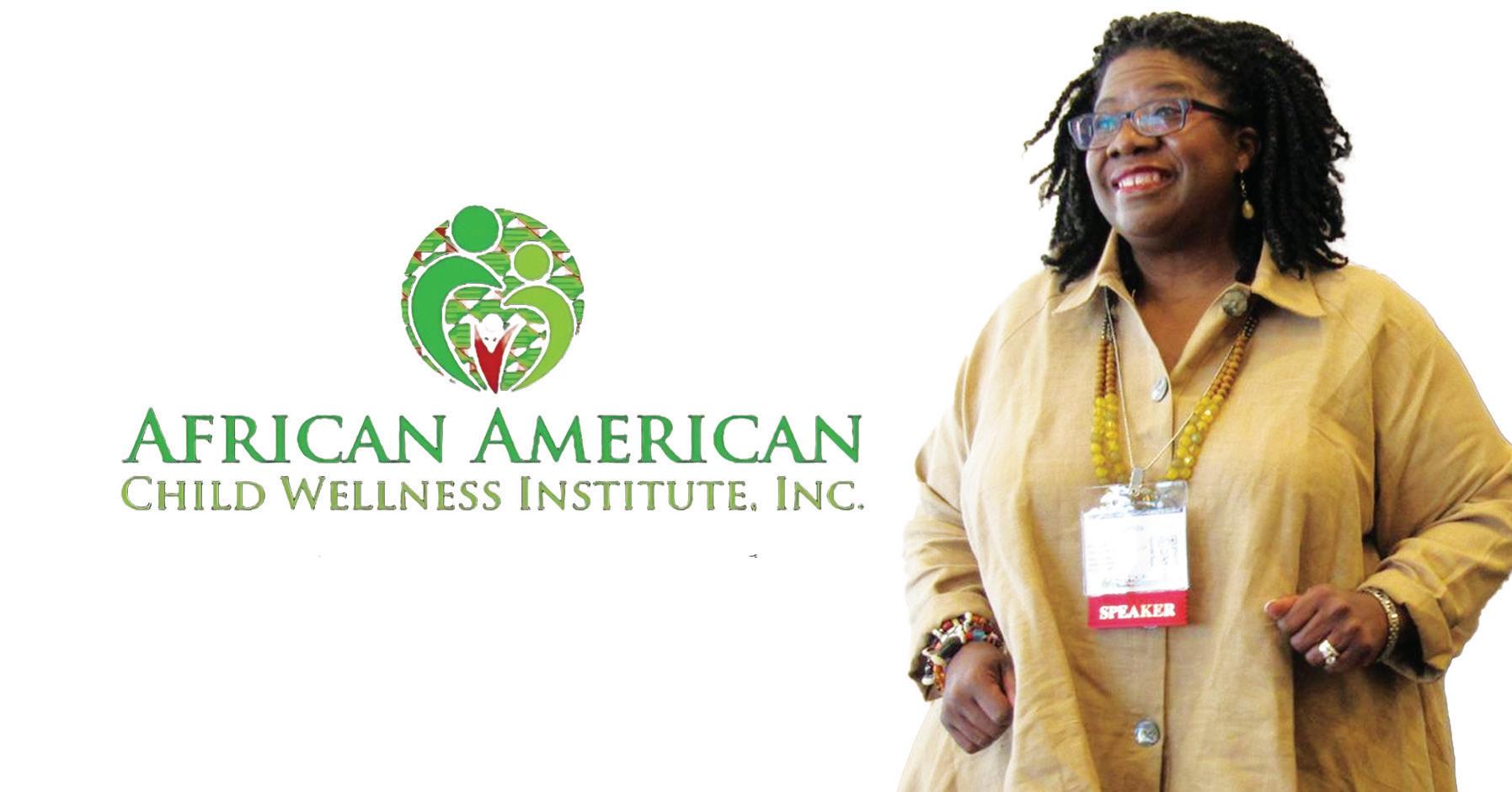
The African American Child Wellness Institute (AACWI) has been awarded a two-year $149,000 grant by the Minnesota Board on Aging (MBA) to increase community awareness and understanding of Alzheimer’s disease and related dementias within the African American and African immigrant populations. The intent of the grant is to promote early diagnosis and provide caregiver access to resources.
“We are delighted to receive this MBA grant,” says Dr. BraVada Garrett-Akinsanya, founder and executive di-
rector of AACWI. “This grant will expand our portfolio of culturally specific therapeutic services and will help us support the growing numbers of people within our community who suffer from cognitive decline, and their caregivers.”
AACWI will launch a comprehensive public awareness and education campaign beginning fall/winter quarter 2025 within the Twin Cities metro area. The awareness campaign will include a series of informational, monthly workshops and community gatherings to educate the Af-
rican American and African immigrant communities about the disease, the importance of cognitive testing and how to get tested. Additionally, participating individuals will be able to get free screenings for cognitive impairment onsite and gain access to key resources and support services. This MBA grant has been awarded to AACWI at the appropriate time. According to Alzheimer’s Association research, U.S. dementia cases are expected to rise from 514,000 in 2020 to 1 million by 2060, with Black Americans facing the
greatest health risks.
“Timely diagnosis using the right tools is key to treatment and support,” says Maureen Schneider, board chair for the Minnesota Board on Aging.
For more information on the African American Child Wellness Institute (AACWI), visit: https://aacwi.org. Also, follow AACWI on Facebook: https:// www.facebook.com/profile. php?id=100089729367422
This program is supported by funds from the Minnesota Board on Aging.

By Simon Mabon Professor of International Relations, Lancaster University
The morning of October 7 2023 set in process a series of events which have profoundly changed the Middle East.
At the beginning of that month, the region looked very different to today. Saudi Arabia appeared ready to normalise with Israel, having recently set aside longstanding differences with Iran. With the normalisation of relations between the region’s two preeminent military powers would come the possibility of curbing Iran’s influ-

ence. This, in turn, could bring peace to Yemen and Lebanon.
But thanks to the events of that day, this vision is in tatters. As the sun rose, Hamas fighters launched a brutal terror attack in southern Israel, killing 1,195 people and taking a further 251 hostages. The attack opened up a wound at the heart of the Israeli psyche, evoking memories of the Holocaust and of repeated terror attacks across the 2000s.
In the past two years, the destructive reverberations have been felt across the entire Middle East as Israeli forces have sought to assert unilateral and hegemonic dominance. Beyond Gaza, Israel has engaged in military strikes across the region, causing thousands of
deaths and widespread destruction and sowing the seeds of division.
In Lebanon, Israeli strikes on Beirut and across the south led to more than 3,100 deaths – including senior Hezbollah leaders such as Hassan Nasrallah. The Israel Defense Forces (IDF) launched a military campaign in southern Lebanon in October 2024, pushing Hezbollah fighters north of the Litani river. Though a ceasefire was reached on November 26, Israel’s bombardment of Lebanon continues, with the Israeli government citing Hezbollah’s refusal to disarm.
With Hamas and Hezbollah on the ropes, Netanyahu’s attention turned to Iran. Given Israel’s longstanding

view of the Islamic Republic as an imminent threat to Israel’s security, this is hardly surprising. The so-called shadow war that had taken place between the two states across the previous decade erupted. The outbreak of open conflict between the two states on June 13 2025 – since dubbed the 12-day war – had a devastating impact on the Iranian regime. Netanyahu had called for the Iranian people to overthrow the Islamic Republic. But while many Iranians are unhappy with the regime, Israel’s strikes appeared to have the opposite affect as people rallied around the flag.

By Stacy M. Brown Black Press USA Senior National Correspondent
The White House has continued to wage war against the American people — not through bombs or foreign troops, but through policies that strip workers of their dignity, their pay, and their hope. The cruelty is no accident. It is deliberate, orchestrated, and flaunted as a spectacle of power. America’s government has turned its might inward, and its victims are the citizens who once believed they were free.
A newly revealed memo from the Office of Management and Budget claims that federal workers forced into furlough during the ongoing shutdown may not receive back pay once the ordeal ends. In open defiance of the law, the administration argues that the 2019 Government Employee Fair Treatment Act does not automatically guarantee wages to workers sent home or ordered to labor without compensation. The government that once promised fairness has now declared that those who serve it may be discarded. This is not confusion. It is control. Mark Paoletta, the administration’s top lawyer at the budget office, wrote that Congress must pass new legislation to authorize those payments. His reasoning is what one former Republican official called “clearly against its intent.” In other words, the government rewrote the law to justify punishing the very people who keep it running. President Trump offered no compassion, only contempt. “It depends on who we’re talking about,” he said when asked if furloughed workers would receive back pay. “There are some people that really don’t deserve to be taken care of, and we’ll take care of them in a different way.” Those words echo not from a leader, but from a ruler measuring human worth as though it were a currency. Across the country, millions now live the consequences of those words. Families of federal workers stare at empty refrigerators – the
How to conduct post-atrocity research – key insights from practitioners in the field
Claudine KuradusengeMcLeod Professorial Lecturer and Department Chair, Peace, Human Rights & Cultural Relations, American University
Judith Rafferty Adjunct Senior Research Fellow at the Cairns Institute, James Cook University
Nicole Fox Assistant Professor, California State University, Sacramento
Samantha Lakin Lecturer, UMass Boston
Stephanie Wolfe Professor of Political Science, Weber State University
From Gaza to Myanmar and Sudan, communities around the globe continue to suffer the consequences of war, civil strife and sectarian violence. Indeed in 2024, 111 countries experienced some form of mass atrocity against civilians. While it is crucial to support these communities now through humanitarian aid and pressure on parties to end the
it is also important to continue the
the fighting has ended by doc-


umenting the atrocities and elevating the voices of victims and survivors. Doing so helps the process of reconciliation and peace-building. Yet fieldwork in post-atrocity settings is never straightforward. It is complex, emotionally demanding and marked by ethical risks. In a recent article published in the peer-reviewed Journal of Genocide Research, we six scholars, with decades of experience in over 15 countries – including Burundi, Cambodia, the Democratic Republic of Congo, Nicaragua and Rwanda – offered a behind-the-scenes look at the challenges of working in these environments and steps toward more responsible, inclusive and ethical fieldwork. As more post-conflict zones open up to researchers and practitioners – from Syria to Ukraine – we came up with five lessons to address core challenges in the field and offer guidance to ensure that practitioners follow a “do no
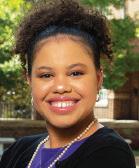
By Haley Taylor Schlitz, Esq.
There are moments when a city whispers before it speaks. You can feel something stirring underneath the quiet, even when few are paying attention. That is how this election in Saint Paul feels right now. Early voting has begun, yet the usual noise of politics seems to have passed us by. But beneath the calm is a question far louder than any campaign ad: what kind of community do we want to be when no one is watching?
Across Minnesota, attention has focused elsewhere, but this election in the capital city may reveal more about who we are becoming than any headline-grabbing race. It asks us to look inward, to consider not only our leadership but our own responsibility. What moves us to act? How far can the challenges around us go before we finally decide to respond and vote?
Since moving to Saint Paul a little over a year ago, I’ve learned that this city carries both the weight of history and the promise of renewal. That spirit is reflected in Mayor Melvin Carter, who is seeking a third term and whose leadership has been tested in ways few could have imagined. He has guided Saint Paul through a pandemic, civil unrest, economic uncertainty, and the fragile work of rebuilding trust. Through it all, his vision has remained rooted in the belief that communities grow strongest when they are centered on care, fairness, and opportunity for all.
His Community-First Public Safety model has become a national example of what it means to balance prevention with accountability. It has reduced violent crime while expanding mental health response and youth outreach. His administration has made progress on affordable housing, climate-ready infrastructure, and removing lead water lines at no cost to families. None of it has been easy, but it has been consistent with a larger truth: real leadership listens, learns, and still chooses to move forward when the path is hard.
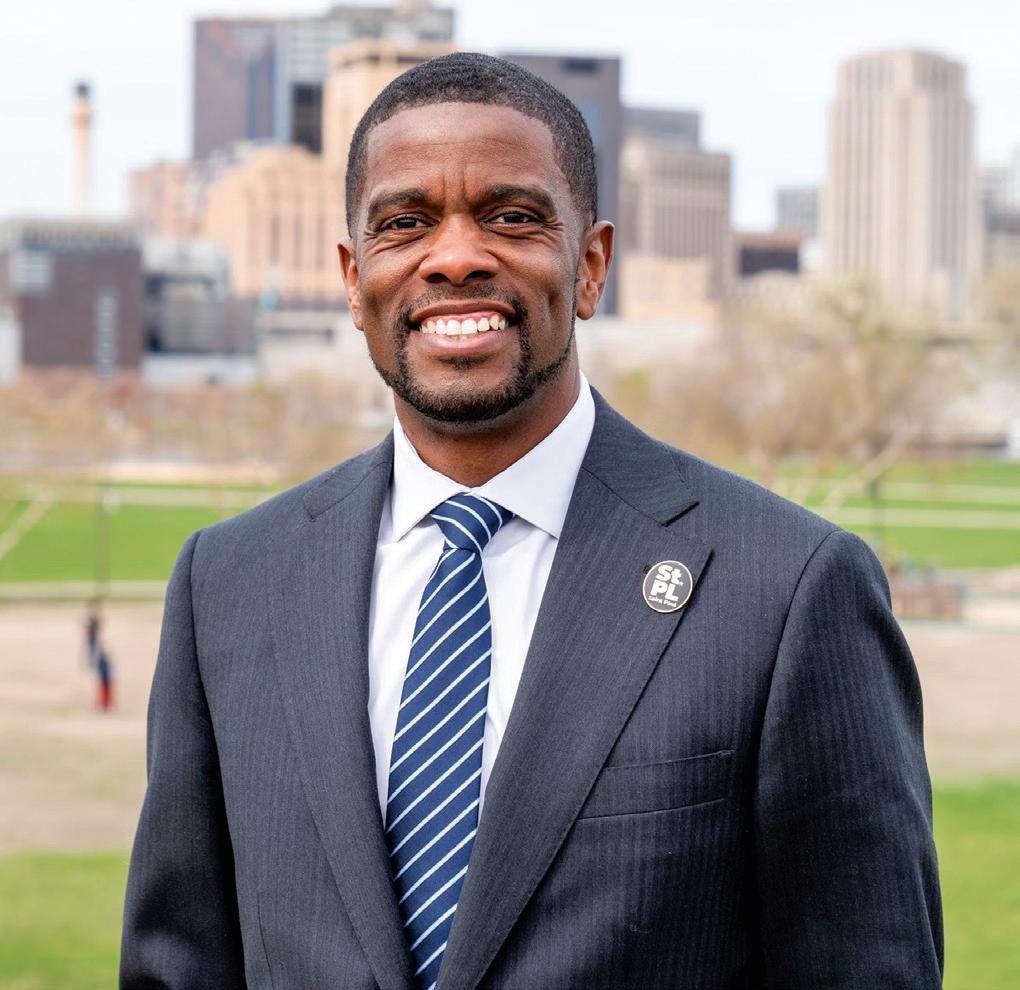
Some critics talk about stagnation or a lack of business focus. Yet what I see is a mayor trying to lead through a time of transformation, not nostalgia. The world that existed before 2020 is not coming back. What matters now is whether we can reimagine Saint Paul for the future. That is what Mayor Carter continues to do. Beyond the mayor’s race, there
are other questions on the ballot that speak to our values as a community. The Saint Paul Public Schools referendum asks voters to support $37 million per year in additional funding to stabilize our schools and prevent deep cuts. As a former teacher, I know the quiet crisis that happens when resources run out before the year ends. This measure is not about ex-
tras. It is about opportunity. It is about saying to every child in this city, especially those in communities of color, that their education is worth investing in. Voting yes means choosing stability over scarcity and hope over hesitation.
Another measure, the Administrative Citations charter amendment, asks whether the city should be able to issue civil fines instead of relying only on criminal penalties for ordinance violations. This amendment gives the city a fairer and more effective tool to hold corporations and landlords accountable while avoiding unnecessary harm to residents. It modernizes our laws in a way that aligns with our sense of fairness and common sense. Each of these choices represents something larger than policy. They ask us whether we still believe in the idea that local government can be both compassionate and strong, both ambitious and grounded in community. They remind us that progress requires participation.
For generations, Black communities have carried democracy forward, often showing up when others stayed home. That legacy runs deep in Saint Paul, where families rebuilt lives after Rondo was destroyed and where organizers continue to fight for housing, safety, and opportunity. Yet I also sense the fatigue that has settled across this generation, especially among my peers in Gen Z. The feeling that the problems are too large and the politics too cynical. But this is the very moment when showing up matters most. If we wait for national elections to save us, we will wait forever. The future of our democracy is built in cities like ours, one ballot at a time. Mayor Carter often says that strong communities do not just happen. They are built by people
By Graham G. Dodds
President Donald Trump set the tone for his second term by issuing 26 executive orders, four proclamations and 12 memorandums on his first day back in office. The barrage of unilateral presidential actions has not yet let up.
These have included Trump’s efforts to remove thousands of government workers and fire several prominent officials, such as members of the Corporation for Public Broadcasting and the chair of the Commission on Civil Rights. He has also attempted to shut down entire agencies, such as the Department of Education
and the U.S. Agency for International Development.
For some scholars, these actions appear rooted in the psychology of an unrestrained politician with an overdeveloped ego.
But it’s more than that.
As a political science scholar who studies presidential power, I believe Trump’s recent actions mark the culmination of the unitary executive theory, which is perhaps the most contentious and consequential constitutional theory of the past several decades.
A prescription for a potent presidency
In 2017, Trump complained that the scope of his power as president was limited: “You know, the saddest thing is that because I’m the president of the United States, I am not
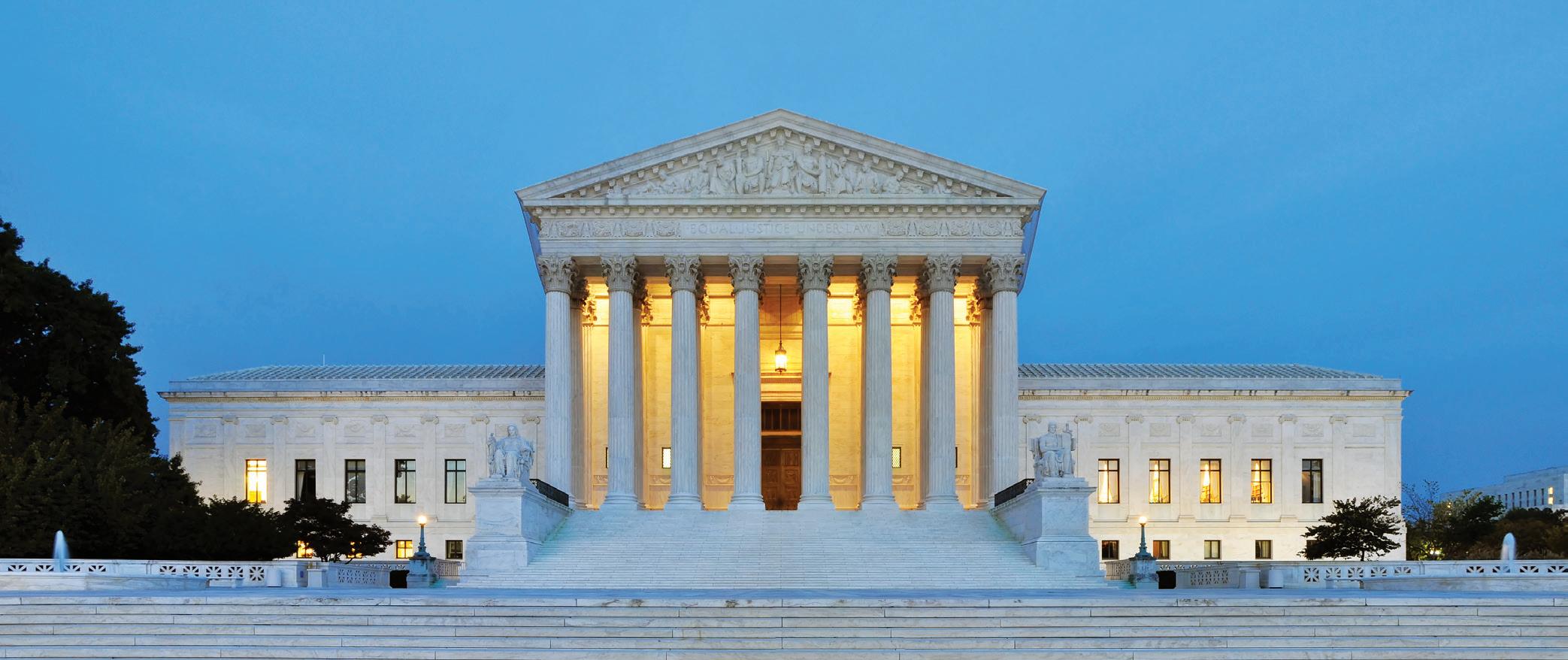
supposed to be involved with the Justice Department. I am not supposed to be involved with the FBI, I’m not supposed to be doing the kind of things that I would love to be doing. And I’m very frustrated by it.”
The unitary executive theory suggests that such limits wrongly curtail the powers of the chief executive.
Formed by conservative legal theorists in the 1980s to help President Ronald Reagan roll back liberal policies, the unitary executive theory promises to radically expand presidential power.
There is no widely agreed upon definition of the theory. And even its proponents disagree about what it says and what it might justify. But in its most basic version, the unitary executive theory claims that whatever the federal government does that is executive in nature – from implementing and enforcing laws to managing most of what the federal government does – the president alone should personally control it.
This means the president should have total control over the entire executive branch, with its dozens of major governmental institutions and millions of employees. Put simply, the theory says the president should be able to issue orders to subordinates and to fire them at will.




The president could boss around the FBI or order the U.S. attorney general to investigate his political opponents, as Trump has done. The president could issue signing statements –a written pronouncement – that reinterpret or ignore parts of the laws, like George W. Bush did in 2006 to circumvent a ban on torture. The president could control independent agencies such as the Securities and Exchange Commission and the Consumer Product Safety Commission. The president might be able to force the Federal Re-
serve to change interest rates, as Trump has suggested. And the president might possess inherent power to wage war as he sees fit without a formal authorization from Congress, as officials argued during Bush’s presidency.
A constitutionally questionable doctrine
A theory is one thing. But if it gains the official endorsement of the Supreme Court, it can become governing orthodoxy. It appears to many observers and scholars that Trump’s actions have intentionally invited court cases by which he hopes the judiciary will embrace the theory and thus permit him to do even more. And the current Supreme Court appears ready to grant that wish.
Until recently, the judiciary tended to indirectly address the claims that now appear more formally as the unitary executive theory.
During the country’s first two centuries, courts touched on aspects of the theory in cases such as Kendall v. U.S. in 1838, which limited presidential control of the postmaster general, and Myers v. U.S. in 1926, which held that the president could remove a postmaster in Oregon.
In 1935, in Humphrey’s Executor v. U.S., the high court unanimously held that Congress could limit the president’s ability to fire a commissioner of the Federal Trade Commission. And in Morrison v. Olson the court in 1988 upheld the ability of Congress to limit the president’s ability to fire an independent counsel.
Some of those decisions aligned with some unitary executive claims, but others directly repudiated them.
Warming up to a unitary executive
In a series of cases over the past 15 years, the Supreme Court has moved in an unambiguously unitarian,
pro-presidential direction. In these cases, the court has struck down statutory limits on the president’s ability to remove federal officials, enabling much greater presidential control.
These decisions clearly suggest that long-standing, anti-unitarian landmark decisions such as Humphrey’s are on increasingly thin ice. In fact, in Justice Clarence Thomas’ 2019 concurring opinion in Seila Law LLC v. CFPB, where the court ruled the Consumer Financial Protection Bureau’s leadership structure was unconstitutional, he articulated his desire to “repudiate” the “erroneous precedent” of Humphrey’s.
Several cases from the court’s emergency docket, or shadow docket, in recent months indicate that other justices share that desire. Such cases do not require full arguments but can indicate where the court is headed.
In Trump v. Wilcox, Trump v. Boyle and Trump v. Slaughter, all from 2025, the court upheld Trump’s firing of officials from the National Labor Relations Board, the Merit Systems Protection Board, the Consumer Product Safety Commission and the Federal Trade Commission.
Previously, these officials had appeared to be protected from political interference.
Total control Remarks by conservative justices in those cases indicated that the court will soon reassess anti-unitary precedents.
In Trump v. Boyle, Justice Brett Kavanaugh wrote, “whether this Court will narrow or overrule a precedent … there is at least a fair prospect (not certainty, but at least a reasonable prospect) that we will do so.” And in her dissent in Trump v. Slaughter, Justice Elena Kagan said the conservative majority was “raring” to overturn Humphrey’s and finally officially embrace the unitary
executive.
In short, the writing is on the wall, and Humphrey’s may soon go the way of Roe v. Wade and other landmark decisions that had guided American life for decades.
As for what judicial endorsement of the unitary executive theory could mean in practice, Trump seems to hope it will mean total control and hence the ability to eradicate the so-called “deep state.” Other conservatives hope it will diminish the government’s regulatory role.
Kagan recently warned it could mean the end of administrative governance – the ways that the federal government provides services, oversees businesses and enforces the law – as we know it:
“Humphrey’s undergirds a significant feature of American governance: bipartisan administrative bodies carrying out expertise-based functions with a measure of independence from presidential control. Congress created them … out of one basic vision. It thought that in certain spheres of government, a group of knowledgeable people from both parties – none of whom a President could remove without cause – would make decisions likely to advance the long-term public good.” If the Supreme Court officially makes the chief executive a unitary executive, the advancement of the public good may depend on little more than the whims of the president, a state of affairs normally more characteristic of dictatorship than democracy.
Disclosure statement Graham G. Dodds does not work for, consult, own shares in or receive funding from any company or organisation that would benefit from this article, and has disclosed no relevant affiliations beyond their academic appointment.

By April Ryan
Democrats and Republicans are both pointing fingers, saying the shutdown is the other party’s fault. The government shutdown means that money has stopped flowing, and there is no continuing resolution to continue the funding for the government. Republicans are in charge
of the House, Senate, and White House and do not want to open borders or focus on healthcare to expand the Affordable Care Act, also known as Obamacare. Firings are expected after an Office of Management and Budget memo during this shutdown, with no end in sight. House Minority Leader Hakeem Jeffries went on social media after midnight, saying, “Democrats are on duty, ready to sit down with anyone, any time, and at any place to reopen the federal government and pass a spending agreement that meets the needs of the American people.” cHowever, Jeffries chastises
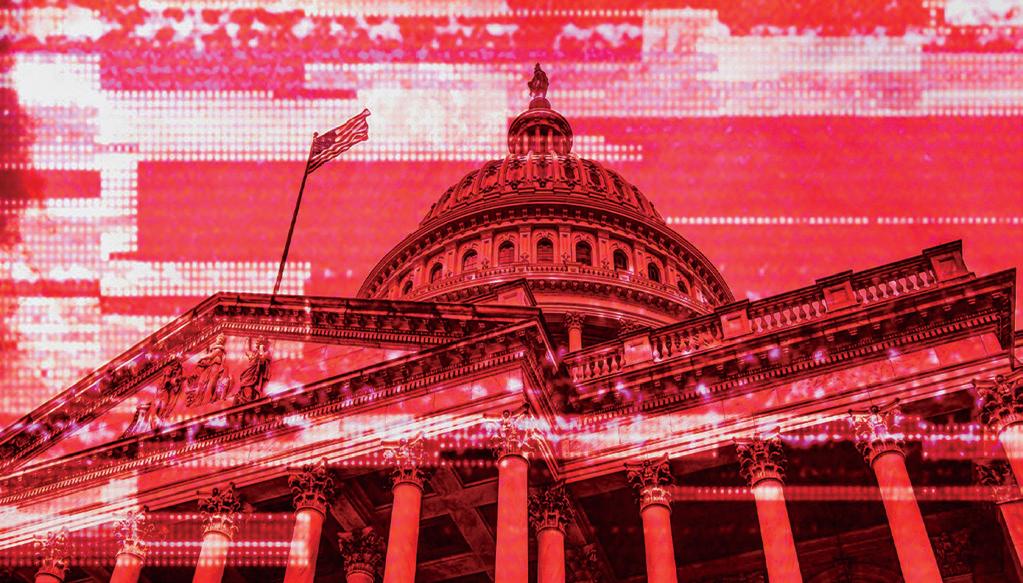
Republicans, saying they are not a “credible partner” right now. He goes on to say,” We will not support a partisan re-
publican spending bill that guts the healthcare of the American people. Not now! Not ever! In a statement, the Congressio-
nal Black Caucus emphasized” Today, our country is facing a crisis entirely of the Republican Party’s making and, unfortunately, Black communities will be forced to bear the brunt of their political games.” During the 2018-2019 shutdown, the longest government shutdown in the nation’s history, the Postal Service, Medicare, and Social Security payments continued. Still, according to reports, some SSA services could be impacted during this shutdown. Federal courts, border security, disaster aid, banks, air traffic control, federal law-enforcement agencies, prison staff, the Secret Service, and the Coast Guard remain open. Due to the shutdown, the National Museum of African American History and Culture posted on Instagram that it will remain open until October 6th, using existing funding to stay open until Monday. When it comes to airports, TSA agents are working without pay. However, once the government reopens and funding is flowing, TSA workers will receive their pay retroactively. Also, the nation’s veterans will receive health insurance during the shutdown from Veterans Affairs.
By Stacy M. Brown
Former President Barack Obama has stepped back into the political arena, delivering some of his sharpest critiques yet of President Donald Trump as the Democratic Party struggles through one of its weakest moments in modern history. With the party’s leadership approval at historic lows and its ties to Black-owned media nearly nonexistent, Obama’s renewed visibility has exposed both the vacuum and the disillusionment threatening to fracture the Democratic coalition. In recent weeks, Obama has spoken out against Trump’s authoritarian-style intimidation of universities and the administration’s crackdown on the press, declaring that America must “resist being intimidated” and warning that protecting democratic values may require “sacrifice.” At Hamilton College, he admonished Trump’s White House for suspending security clearances and canceling contracts with law firms and schools tied to perceived political rivals. “That kind of behavior is contrary to the basic compact we have as Americans,” Obama said.
“Imagine if I had done any of this.” Days later, he took to social media to denounce media companies for capitulating to Trump’s threats. “After years of complaining about cancel culture, the current administration has taken it to a new and dangerous level,” Obama wrote, urging journalists and networks to “get a spine” and stand up for free speech.
Late in September at London’s O2 Arena, Obama expanded his message beyond immediate politics, telling a packed crowd that true leadership means constant vigilance and the courage to “show up and speak out even when it’s uncomfortable.” He cautioned against complacency, arguing that progressives had grown “smug” and unprepared for the rise of authoritarianism. “True democracy is a project much bigger than any one of us,” he said. “It’s a job for all of us.”
Obama’s renewed activism comes at a time when his party’s base has grown increasingly restless. A Pew Research survey found that 59 percent of Democrats disapprove of their party’s leadership—the highest level of dissatisfaction since the question was first asked more than a decade ago. Senate Minority Leader Chuck Schumer’s approval among Democrats has collapsed to 35 percent, while
House Minority Leader Hakeem Jeffries remains little known to nearly four in ten Democratic voters.
That lack of visibility and engagement has been felt most acutely within the Black community. At the Black Press of America’s annual Leadership Awards, where Jeffries and Congressional Black Caucus Chair Yvette Clarke were to be honored, anticipation filled a packed ballroom. But neither showed up.
Civil rights attorney Ben Crump had just pledged $50,000 to support the struggling Black Press, urging others to follow suit. “Typical of Democrats,” one attendee said afterward. “They don’t spend money with us. They don’t show up. And then they expect us to deliver their message for free.”
The snub, just 18 months before the Black Press’s bicentennial, struck a nerve among publishers who have covered every chapter of America’s freedom struggle—from emancipation to civil rights—without the financial support they deserve. “Our ancestors built this press through every trial in this country,” said one Black publisher after the event. “The least Hakeem Jeffries could do was show up.”
Obama’s reemergence has not gone unnoticed by voters—or by Trump. During
a recent Navy celebration in Virginia, Trump attempted to incite the crowd to boo Obama, but the attempt backfired. As he invoked “Barack Hussein Obama,” the crowd met him with dead silence. Meanwhile, polls show that Obama remains the most admired living president. A Marquette Law School survey found Obama with a +17 net favorability, compared with Trump’s -15 and Joe Biden’s -24. Even so, Obama’s return to the spotlight underscores a sobering truth: the Democratic Party, battered by infighting and a failure to connect with its own base, still lacks a clear, trusted voice. Obama’s critiques of Trump’s policies—whether over healthcare rollbacks or media suppression—stand in contrast to the muted response from current Democratic leaders, who have failed to mobilize voters around issues that once defined their moral compass.
Trump’s efforts to dismantle the Affordable Care Act have revived Obama’s signature policy as the centerpiece of a national political showdown. Democrats, scrambling to extend ACA subsidies that prevent premiums from skyrocketing, have tried to make healthcare their rallying cry again—but without strong, unified leadership, the message has struggled to resonate. For all his mea-
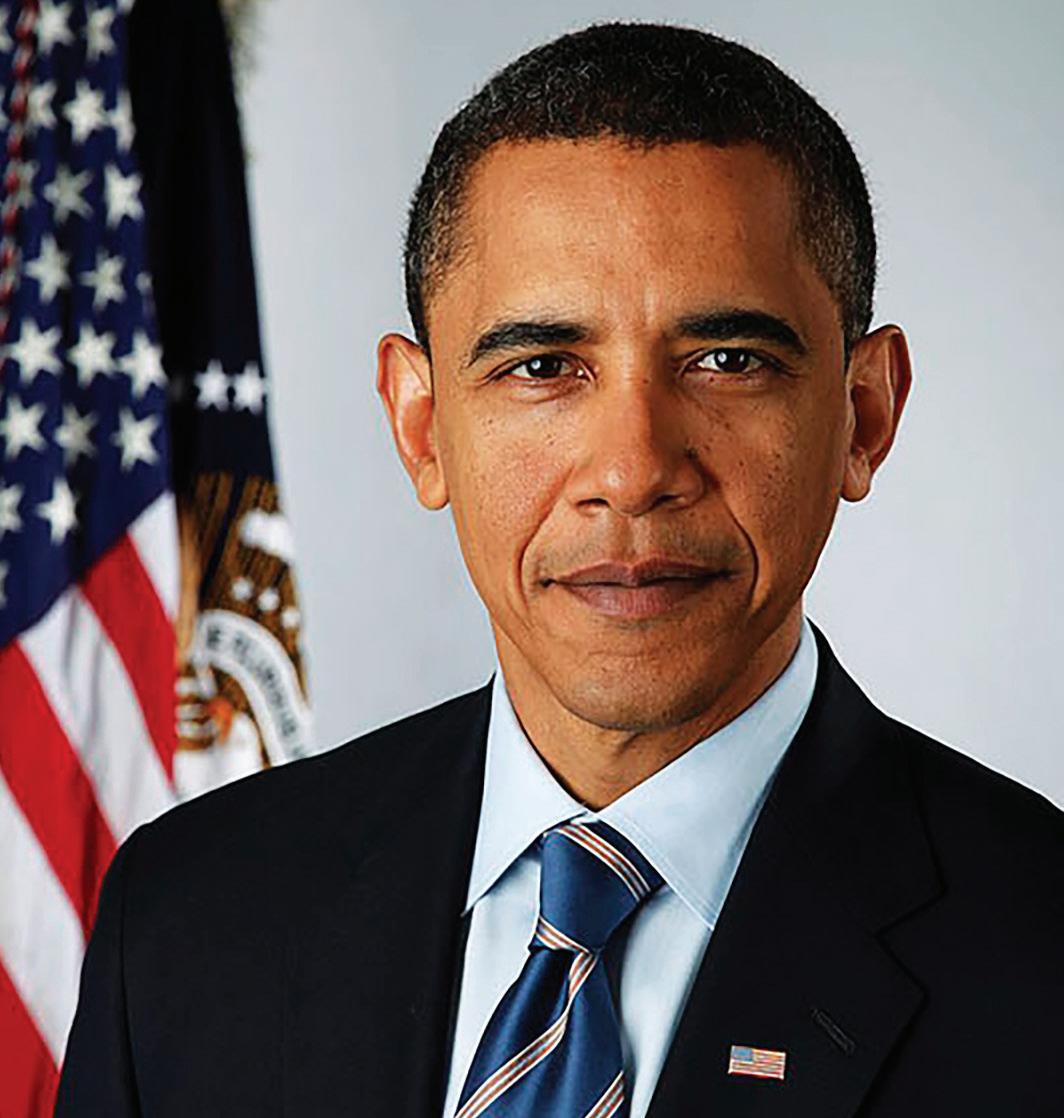
sured tone, Obama’s message has sharpened into something closer to alarm. He warns that complacency, even within his own party, has opened the door to authoritarianism. “Progressives assumed our trajectory would bend inevitably toward progress,” he told the audience at the O2. “That complacency left us unprepared.” As Trump wields federal power to punish dissent, the former president’s words carry the weight of both
warning and legacy. But even as Obama reasserts his influence, the party he once led remains uncertain and divided—still ignoring the independent Black media that carried it through generations, and still searching for leadership that matches the gravity of this moment. Obama may have left office eight years ago, but in 2025, he appears to be the last Democrat still leading.

By Stacy M. Brown
When the Supreme Court began its 2025–26 term on Monday, October 6, 2025 legal observers, scholars, and advocates warned that the justices are again positioned to shape the country’s direction on equality, freedom, and democracy itself. The new docket is filled with cases involving race, gender, campaign finance, and presidential authority. At the D.C. Bar’s annual Supreme Court Review and Preview, more than one hundred attendees gathered in person and virtually to hear predictions about the cases that could define the nation’s future. Moderator Daniel Woofter said the “polarization of the Court is undeniable.” According to figures discussed at the event, Chief Justice John Roberts joined
the majority 95 percent of the time during the previous term, while Justices Clarence Thomas and Samuel Alito aligned 97 percent of the time. Elaine Goldenberg of Munger, Tolles and Olson said what was once a rarely used emergency docket has now become “a huge part of the Supreme Court’s work.” She said the docket has allowed the justices to act on politically charged cases without the full process of hearings. That process could again be used to decide cases on transgender rights, conversion therapy, and the limits of presidential authority. In Little v. Hecox and West Virginia v. B.P.J., transgender students are asking the Court to overturn laws that prevent them from competing on teams that match their gender identity. The United States filed briefs opposing those challenges. “It doesn’t seem likely to me that the challengers of both laws are
likely to prevail,” Goldenberg stated, noting that the government’s arguments were “sharp in tone” and clearly presented. The PBS NewsHour described this year’s docket as “a reflection of the cultural and partisan clashes of American politics.”
One of the most significant cases, Louisiana v. Callais, will determine whether the state must create another majority-Black congressional district under the Voting Rights Act. The case follows Allen v. Milligan, which required Alabama to add a second Black-majority district. The late Justice Ruth Bader Ginsburg once warned that removing protections from the Voting Rights Act was “like throwing away your umbrella in a rainstorm because you are not getting wet.”
Another case, Chiles v. Salazar, challenges Colorado’s law banning conversion therapy for minors. The lawsuit claims the ban violates free
speech and religious liberty. Medical and mental health organizations have long described conversion therapy as dangerous and harmful to young people. In National Republican Senatorial Committee v. Federal Election Commission, former Senator JD Vance is asking the Court to strike down restrictions on how political parties and candidates can coordinate campaign spending. William Jay of Goodwin Procter said the lawsuit “blurs the line between giving and spending.” He said the longstanding rule that giving money to candidates can create corruption risks while spending personal funds counts as free speech is now in question. The Court will also consider Learning Resources, Inc. v. Trump, a case challenging tariffs imposed under the International Emergency Economic Powers Act. “There was no relationship between the products and the drug traffick-
ing cited to justify the tariffs,” said Morgan Ratner of Sullivan and Cromwell. She explained that the case tests how far presidents can extend their authority during so-called national emergencies. SCOTUSblog reported that the Court has added several other cases touching on guns, property rights, and government power, including a challenge to Hawaii’s law that prevents people from carrying handguns on private property without the owner’s consent. The Court will also review disputes over compensation for property confiscated in Cuba and how the Fifth Amendment’s takings clause applies in those cases.
Legal analyst Elie Mystal wrote in The Nation that the Court “has been corrupted and weaponized” and now functions as “an antidemocratic enforcement mechanism of the Republican political agenda.”
He said Democrats missed an opportunity to push for real re-
form after the Dobbs ruling that overturned Roe v. Wade. Mystal said, “The Supreme Court does not have the final say over how we have to live as a society. We do.” The PBS NewsHour reported that the Court’s
From 3
Hostilities culminated in bombing raids launched by the US on Iran’s nuclear installations. While the success of these raids has been open to question, the raids allowed the US president, Donald Trump, to claim a US victory.
He demanded an end to hostilities between Israel and Iran and Iran’s retaliation to the US strikes was confined to a carefully orchestrated attack on a US base in Qatar, which was telegraphed in advance and was
more performative than escalatory.
Israel has also conducted regular strikes against the Iran-backed Houthi rebels in Yemen, which had targeted Israeli (and other countries’) shipping in the Red Sea. And since the fall of the Assad regime, the Israeli military has occupied large tracts of southern Syria, seizing the demilitarised buffer zone around the contested Golan Heights in violation of a 1974 treaty between the two countries.
More recently, Israel struck targets in Doha, Qatar, in an effort to assassinate senior Hamas leaders which ultimately failed. The strike prompted
a united front from the Gulf monarchies who called for a real discussion about ending the war. With US officials furious at the Israeli strike on a major non-Nato ally, diplomats sensed an opportunity for a breakthrough.
Peace plan Donald Trump’s 20-point plan to enact a ceasefire has the potential to be an impressive feat of diplomacy, bringing together a wide range of disparate actors with a real chance of ending the fighting –despite its multiple flaws. But as a feat of peace building, it rings hollow.
The plan does not indicate how a Palestinian state
will emerge. It does suggest that the Palestinian Authority will, in the right circumstances, play a role in the governance of Gaza – but this is something that Netanyahu has repeatedly rejected. Instead, the Gaza International Transition Authority will resemble a mandate of the sort imposed by the League of Nations over a century ago. And even if Trump’s plan brings about a ceasefire and the release of the Israeli hostages, the contours of regional order have been dramatically affected. Without a Palestinian state there can be no Saudi normalisation with Israel. This is a point that Saudi crown prince, Mohammad bin Salman, has
made abundantly clear. Popular anger across the region will remain. The failure to secure a viable Palestinian state after the Abraham accords provoked anger and resentment among some. That feeling is now growing with the death and destruction meted out to people in Gaza. If a ceasefire doesn’t emerge, the destruction of Gaza will continue at a pace which will continue to have a catastrophic impact across the Middle East. Israel will remain diplomatically isolated while its citizens will continue to live in fear of Houthi and Hezbollah rockets or attacks from what remains of Hamas, as well as
having to deal with the memory of October 7 for years to come. All the while, Palestinians continue to die on a daily basis and there are still Israeli hostages (and in some cases bodies) waiting to be brought home. Gaza is devastated and rebuilding the enclave will take decades. And the so-called international rules-based order may never recover. Disclosure statement Simon Mabon receives funding from Carnegie Corporation of New York and The Henry Luce Foundation.
most recent estimate revealed that more than 49,000 District residents, or 13 percent, are federally employed – and rent notices pile up. CNN reported that many workers will receive smaller paychecks this week, the last they may see until the shutdown ends. What kind of democracy weaponizes hunger against its own citizens?
harm” approach:Yet fieldwork in post-atrocity settings is never straightforward. It is complex, emotionally demanding and marked by ethical risks.
In a recent article published in the peer-reviewed Journal of Genocide Research, we six scholars, with decades of experience in over 15 countries – including Burundi, Cambodia, the Democratic Republic of Congo, Nicaragua and Rwanda – offered a behind-the-scenes look at the challenges of working in these environments and steps toward more responsible, inclusive and ethical fieldwork.
As more post-conflict zones open up to researchers and practitioners – from Syria to Ukraine – we came up with five lessons to address core challenges in the field and offer guidance to ensure that practitioners follow a “do no harm” approach:
1. Don’t let marginalized voices be an afterthought
From my experience, post-atrocity fieldwork can too often rely on collections of firsthand accounts that include only, or for the most part, men. Women’s stories of intervening in mass violence tend to be largely absent.
This reflects how post-atrocity research often overlooks the impact of gender norms and hierarchies. Depending on local cultures, women are often portrayed as victims by researchers, but men are frequently the voices of everyone’s experiences.
Women have traditionally been excluded in post-atrocity research simply because no one asked them. Their experiences were dismissed as indistinct from men’s, shaped by patriarchal assumptions about heroism. There may also be reasons around the culture or stigma of surviving violence that silence women’s voices.
Yet my interviews revealed women played vital roles — saving lives, resisting violence and halting militias. Ironically, it was often their political invisibility that enabled women’s acts of intervention.
As such, a best practice approach to post-atrocity fieldwork would involve researchers actively including marginalized voices from the outset — particularly women, racial and ethnic minorities, and members of groups historically excluded — and use methods that uncover how power, identity and visibility shape who gets remembered.
– Nicole Fox, associate professor of criminal justice, California State University, Sacramento
2. Positionality is a method, not just a mindset Navigating positionality – that is, a given individual’s place in society based on factors such as gender, class and race – in post-genocide research is both challenging and essential.
The administration’s defiance also contradicts its own Office of Personnel Management, which stated that “employees who were furloughed as a result of the lapse will receive retroactive pay for those furlough periods” once the shutdown ends. But this White House does not deal in law; it deals in loyalty. It rewards obedience and punishes dissent. It governs by threat and humiliation. Senator Patty Murray called the memo a “baseless attempt to try and scare and
It’s not just about self-reflection; it’s about shaping how and why you ask questions in places where trust has been shattered.
Too often, researchers swoop in, collect stories and leave. But that does not truly capture the lived realities of people who have survived mass violence.
To avoid this, it is important to build teams that include both insiders and outsiders. For example, we put together a team to conduct fieldwork that included a Rwandan genocide survivor, a South African scholar and an American scholar. We came from different regions, disciplines and life experiences. Crucially, our Rwandan colleague was a full research partner as well as acting as a translator. His presence granted access and trust we could never have earned alone.
For researchers in sensitive contexts, building collaborative and thoughtful teams isn’t just ethical – it’s methodologically essential.
This commitment to critical reflection and research design also plays out in how researchers from the Global South navigate predominantly Western academic spaces.
– Stephanie Wolfe, professor of political science at Weber State University
As an African researcher among mostly Western scholars, I found that I was perceived as African first and researcher second – which was a double-edged sword.
It involved having to endure inquiries from colleagues that were often much more personal than professional, and having to prove sufficiently “Africanness” to white researchers.
Such experiences made it hard to be taken seriously. As one of the few African-born scholars in the post-atrocity research space working in the U.S., it was important not to be an outsider. Positionality isn’t a footnote – it’s your lens and lived experience.
As a field researcher, it is crucial to create spaces for more diverse scholars to be able to conduct research without being continually devalued or tested.
– Claudine Kuradusenge-McLeod, lecturer in peace, human rights & cultural relations at American University
3. Secondary trauma is real and needs our attention
If trauma results from direct experience, secondary trauma occurs where people are exposed to or interact with those who have experienced trauma firsthand.
Experiencing secondary trauma is an often-underappreciated dynamic of doing field research. Conducting interviews with survivors of violence can leave the researcher with images, sounds and vicarious connections to trauma.
Post-atrocity researchers then have a real need to receive appropriate training, support and therapy. Breaking down the silent-burden element
intimidate workers by an administration run by crooks and cowards.” Everett Kelley, president of the American Federation of Government Employees, said the livelihoods of federal employees “are not bargaining chips in a political game.” But that is precisely what they have become — bargaining chips in a government of vengeance. This administration treats suffering as performance art. It praises soldiers while starving civilians. Trump told sailors at a naval ceremony not
of this kind of work and creating spaces to talk and share this element of working with trauma in post-atrocity situations would better prepare researchers for the field.
Creating lifelines, such as support networks, in the field and out, is essential to having the right support when it’s needed most. It is important that researchers also recognize that secondary trauma ties the practitioner to the field and our interviewees; this can be a resource for understanding violence and how it can be prevented.
Universities can help researchers by providing resources to deal with secondary trauma. In addition, researchers themselves can find ways to talk about, share and process this kind of trauma.
– Chris Davey, lecturer in political science, Binghamton University
4. Building trust is a process, not just an outcome
Attempting to create trust while conducting research in a post-genocidal society is challenging, yet vital. Knowing and respecting cultural, linguistic and historical norms are important ways for researchers to follow the principle of “do no harm.”
In post-atrocity contexts, researchers have to contend with navigating complex sociopolitical dynamics to determine who they can trust, what organizations should be partnered with, and what is safe to do, ask or even publish.
In some cases, researchers may also choose what not to do – such as stopping or declining an interview if it might put someone at risk. Practitioners are responsible for minimizing risk when working in communities that have experienced a complete breakdown of trusting relationships.
Recognizing this dynamic can prepare researchers to preempt potential issues and manage unintended harm in a community that is already struggling to rebuild social trust. Importantly, trust-building shouldn’t be seen as a means to an end, but as part of a process through which practitioners do no harm in the field and mitigate risk for partners who live in the research setting.
– Samantha Lakin, Senior Fellow, Center for Peace, Democracy, & Development, UMass Boston
5. Navigating bureaucracy and authoritarian spaces
Knowing how to safely navigate bureaucracy is crucial for keeping researchers and field-based teams safe in post-atrocity settings.
Whether this means carrying documentation around, taking additional time to meet with authorities to get their approval for research, or being able to provide forms of compensation to officials, researchers need to be prepared.
Taking this time might mean delaying engaging directly with survivors or other research participants, but it can often lead to insights about the
to worry about their paychecks, promising they would “get every last penny.” The message was unmistakable: the military will be fed; the rest of you can starve. Federal employees, once seen as the backbone of public service, are now branded as enemies of the state. The same government that sends the National Guard into American cities and deploys ICE agents to terrorize neighborhoods now tells its own workers they may never be paid. It is no longer governance; it is domination. The America
local context, safety and the intersectionality of officials who might have unique takes on research themes.
Working with local partners, like GEC-SH in eastern Democratic Republic of Congo, to identify expectations in the field and learn from this existing expertise is key to successfully navigating bureaucracy – as is allocating additional time to cooperate with authorities and to understand the local context – including practices that might be characterized as “bribes.”
– Chris Davey, lecturer in political science, Binghamton University Disclosure statement Christopher P. Davey works for Binghamton University. He received funding from
that claimed to be the light of the free world now stands as a warning to it.
Robert Shea, a former budget official, said the administration’s argument was “clearly against its intent,” but intent no longer matters when a nation loses its soul. This is the transformation from republic to regime — a process that does not happen with tanks in the street, but with memos like this one. Quiet signatures. Cold language. Lives destroyed by decree. This is how democra-
the Harry Frank Guggenheim Foundation. He is a research associate for Education for Global Peace.
Claudine Kuradusenge-McLeod received funding from the Harry Frank Guggenheim Foundation. She is a Senior Professorial Lecturer and the Chair of the Department of Peace, Human Rights & Cultural Relations at the School of International Service, American University.
Samantha Lakin has received research funding from the Fulbright-IIE. She is currently affiliated with the Center for Peace, Democracy, & Development at the University of Massachusetts Boston.
Stephanie Wolfe is a Professor at Weber State University and a Research As-
sociate in the Department of Ancient and Modern Languages and Cultures, Faculty of Humanities, University of Pretoria 2022-2028. Funding for various research projects were provided by Weber State University (WSU) through the Richard K. and Shirley S. Hemingway Foundation with institutional support from WSU, University of Pretoria, and Never Again Rwanda.
Judith Rafferty and Nicole Fox do not work for, consult, own shares in or receive funding from any company or organisation that would benefit from this article, and have disclosed no relevant affiliations beyond their academic appointment.
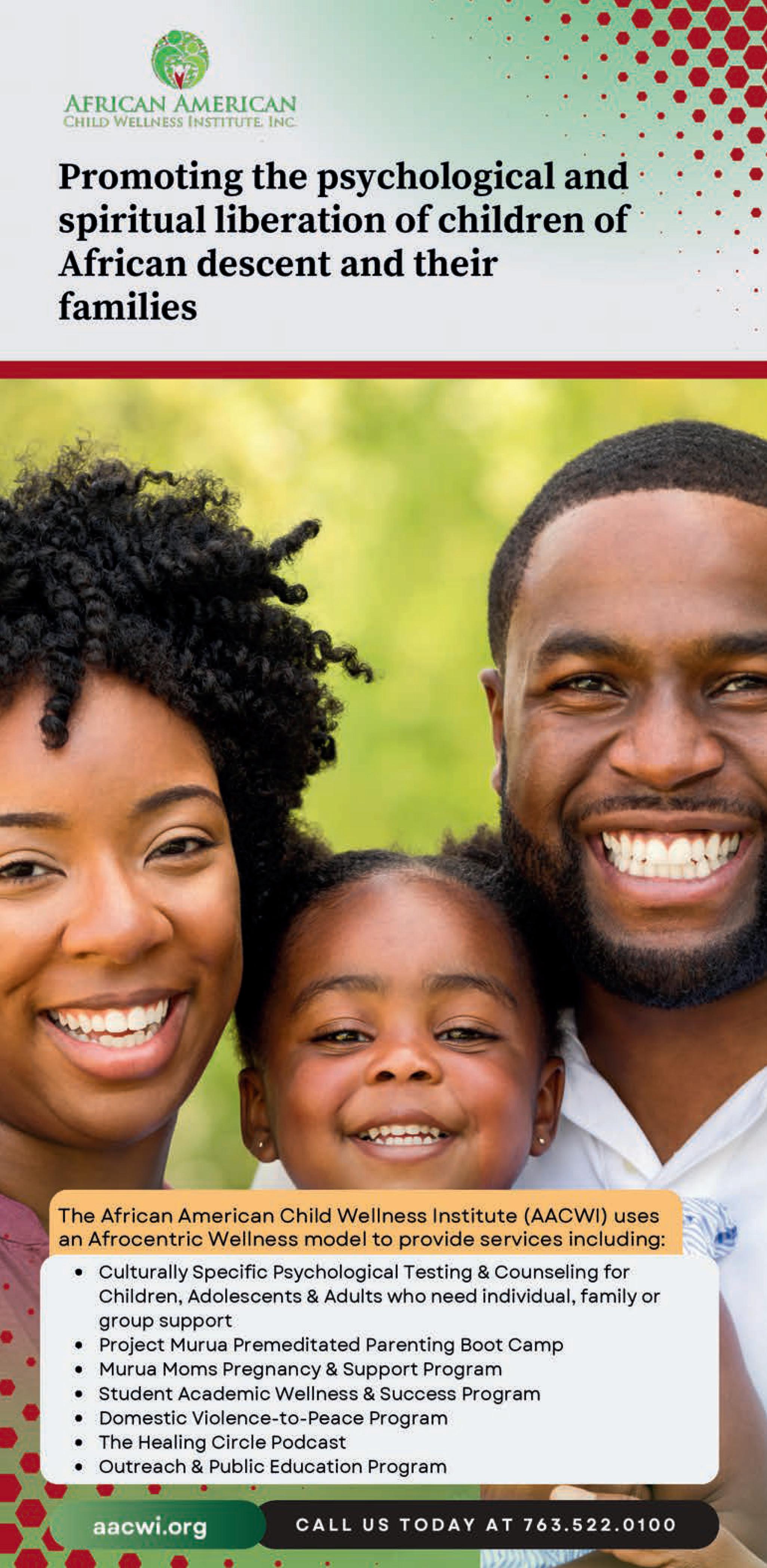
The 2025 Prosperity Summit last week brought together nonprofits, corporations, community leaders, and entrepreneurs around a shared goal: creating pathways to prosperity for all.
Prosperity Now President and CEO Marisa Calderon, described the importance of aligning institutional capital with purpose and leading boldly through uncertainty.
“We can’t simply wait for stability to return,” she said. “We must build the world we want to see for ourselves—because no one’s going to do it for us. If we trust in each other and take the steps this moment requires, every family, every entrepreneur, every community will have the chance not only to get by, but to truly thrive.”
“Prosperity Now has spent its 46-year history putting communities at the center of innovation—ensuring that tools are developed with intention, tested with care, and scaled in ways that truly expand opportu-
nity,”Calderon said. “Economic mobility has always depended on access, trust, and resilience. Today, those same principles must guide how we embrace the next wave of technological change.”
We live in a time where people often operate in completely different information bubbles. As journalists, we see firsthand the challenge of separating fact from fiction in an environment where entertainment and satire can look a lot like news. But storytelling still matters—it’s how we connect, how we break through silos, and how we spark action, not just applause,” said journalist Jim Acosta
“Evidence alone isn’t compelling. It doesn’t tell the story in a way that moves people—it’s just numbers on a page. You have to show who’s behind those numbers so there’s a face to it. That’s what compels change,” said Calderon. Shena Ashley, Capital
One insights Center, Darlene Goins, Wells Fargo Foundation, Roma Kaundal, JPMorganChase, and Erica Opstad, U.S. Bank Foundation, said corporate and philanthropic capital can strengthen financial stability and resilience.
The Rise Challenge, presented in collaboration with Accenture and Avanade, highlighted practical, scalable tools that help Community Development Financial Institutions (CDFIs) and similar lenders strengthen their operations.
Virginia-based fintech Parlay Finance, the 2025 Rise Challenge winner, earned the top prize: $100,000 implementation contract through Prosperity Next for its Loan Intelligence System (LIS), a platform that automates loan intake and eligibility reviews to help CDFIs expand access to capital.
“We are thrilled to win the 2025 Rise Challenge and look forward to working with Prosperity Next to empow-
er CDFIs with scalable AI-powered technical assistance for small businesses across the country," said Alex McLeod, cofounder and CEO of Parlay Finance.
A session entitled Innovation Over Nostalgia: AI, Crypto and America’s Next Workforce explored how AI, digital platforms, and new financial tools are transforming household financial security. Moderated by Dave Uejio, COO of Prosperity Now, the session featured experts Cleve Mesidor, Blockchain Foundation, Leigh Phillips, SaverLife, Timothy Flacke, Commonwealth and Melissa Koide, FinRegLab examined how embracing innovation with intention and building tools and safeguards can help families thrive in a changing economy. Learn more at www. prosperitynow.org.

Pew finds just 6% of journalists are Black as crisis grows with recent firings


North Regional Library | 1315 Lowry Ave N. Sunday, October 19 | 1 – 2p.m.
Come learn about grants, the application process, and how to prepare strong grant applications. An instructor will present about how grants work, applying for grants, as well as writing tips and techniques that you can use to help get grant funding. Learn to search for grantmakers, study their funding interests, and find out how to approach your best prospects. Bring any grant related questions you have!
Instructor: Rose-Marie Athiley

By Stacy M. Brown Black Press USA Senior National Correspondent
The dismissal of Karen Attiah from the Washington Post has become more than a personnel decision. It is a scarlet warning, a reminder of what has long haunted the American press: the Black voice is too often invited in only to be pushed out when it dares to speak of the nation’s truths. Attiah, the Post’s only Black female opinion writer, said she was terminated after more than a decade at the paper for posts she wrote on social media addressing violence and the dangers of white extremism. “Being pushed out of the Washington Post for expressing myself, for not even expressing myself, for doing my job as a journalist, is really a deep, sort of cruel 180,” she told the Associated Press. Her removal comes at a time when Black journalists already stand on fragile ground in an industry that continues to exclude them. According to the Pew Research Center’s most recent survey of American newsrooms, only 6 percent of reporting journalists in 2022 were Black, though Black people make up 12 percent of the population. White journalists accounted for 76 percent of reporters, even though the white population stands at 61 percent. The National Association of Black Journalists said Attiah’s firing had “raised an alarm about the erosion of Black voices across the media.” “The absence of Black journalists doesn’t just harm us, it impoverishes the entire profession,”
our voices are missing, stories go untold, perspectives go unchallenged, and the truth remains incomplete.” For diversity advocates, the danger is not confined to one journalist. It sets a precedent that ripples across the profession. Media 2070, a group dedicated to racial equity in journalism, called the firing “a dangerous and deliberate act of erasure by media owners.” Philip Lewis, president of the Washington Association of Black Journalists, called it a chilling moment. “This firing sends a message to other Black journalists and writers that our perspectives aren’t valued unless we align with the status quo.” Attiah has refused to go silent. At the Congressional Black Caucus Foundation’s Annual Legislative Conference, she spoke during a panel on Black women in media and warned that the campaign against truth would not stop with her. “I hate to be Debbie Dark Cloud, but if you think things are really bad, they can and they will, and they’re trying to make it worse,” she said.
Experts caution that the absence of diverse voices has real consequences. “When you disappear people from spaces, you lose those valuable discussions that help our nation really process who we are and what kind of country we want to be,” Khadijah Costley White, a professor of journalism and media studies at Rutgers University, said. Eric Deggans, the Knight Chair in Journalism and Media Ethics at Washington and Lee University, questioned the Post’s judgment. “I don’t understand why the most extreme punishment is the first punishment,” Deggans said. “I don’t understand why there’s not an attempt to sort of talk with the employee and let them know what they did wrong.”
The Pew study found that Black journalists are most visible in coverage of social issues and policy, where they make up 15 percent of those reporters, but remain scarce across politics, the economy, science, and technology. This clustering leaves most national conversations filtered through a white lens, even as the country grows more diverse. Despite her firing, Attiah has insisted there is still a possibility in this moment. “I think this is also a time for profound creativity,” she said, “being like water rising and like water moving around the cracks and actually, over time, eroding and undoing.”
colleges and universities aren’t well known, but are a crucial steppingstone for Native students
By Cynthia Lindquist Director of Tribal Initiatives & Collaborations, University of North Dakota
Most Native American high school students do not attend or graduate from college.
As a tribal member of Spirit Lake Nation in North Dakota and the former president of Cankdeska Cikana Community College in Fort Totten, North Dakota, I recognize the difference that tribal colleges and universities, like the one I used to work at, can have in rerouting Native students’ education journeys.
Tribal colleges and universities, or TCUs, are public institutions that are founded and run by a Native American tribe and focus on serving Native American students and communities.
The approximately
3.9 million Native Americans living in the U.S. have long recognized that TCUs are unique institutions that help Native students succeed in school and earn higher education degrees.
Most Americans, though, have no idea that tribal colleges and universities even exist, let alone know how they work. Understanding tribal colleges TCUs enroll approximately 30,000 students each year, including some non-Native students. The median annual tuition at TCUs is US$3,572, making them more affordable than most other public universities.
There are 35 accredited TCUs across 13 states, including Montana, Arizona, Oklahoma, North Dakota and South Dakota. All of these schools are nonprofits.
While a single Native tribe sometimes sets up a tribal college, in other cases a consortium of tribes or the federal government helps establish a school.

Despite their differences, tribal colleges and universities all have the same mission of teaching Indigenous history, culture and languages.
All the tribal colleges also offer associate degrees and certifications. Twenty-two of them have only baccalaureate programs, and nine have master’s programs. Navajo Technical University, a tribal college in Crownpoint, New Mexico, which has the largest enrollment size of all the TCUs, began offering a first of its kind doctorate program in Diné Studies in 2024. This program focuses on the language, culture and history of the Diné people, also known as Navajo people.
Affordability has always been a consideration when TCUs set tuition and fees, since most are located on rural American Indian reservations with high unemployment and poverty rates, as well as few available jobs.
TCUs keep their tuition relatively low in part because a majority of their funding comes from the federal government. They also receive funding from philanthropic organizations.
TCUs also generally have minimal overhead
costs, since most students live off-campus and only a handful of these colleges and universities offer on-campus housing. Most TCUs have both in-person and online courses. While there is no single profile of a TCU student, I found that it is common to encounter a 30-year-old, single mother who works full time while trying to earn a college degree.
A growth in college enrollment
In 1968, just 181 Native Americans graduated from a four-year college.
That same year, the Navajo Nation established the first tribal college, then called the Navajo Community College, in Tsaile, Arizona. This school is now called Diné College.
Several factors prevented most Native American students from attending a college or university.
The cost of college was prohibitive, and many Native American students were also not adequately prepared for college in high school. These students and their families also feared that higher education could force them to assimilate into Western and white culture,
and erase their own Native tra-
ditions and languages.
A long political relationship
When considering this historical context, it is important to understand that Native Americans have a unique relationship with the federal government.
Native Americans largely consider this relationship a political one, bound by the various legal precedents, federal policies and executive orders from the 1800s and onward. These orders and policies from the past several hundred years vary, but they often focus on questions of land, assimilation and the political independence of Native tribes.
There are also treaties and orders that focus on education and spell out the federal government’s responsibility to help coordinate and give money to support tribal education.
In 1978, Congress approved the Tribally Controlled Community College Assistance Act, which recognized tribal colleges as higher education institutions and established that the federal government would regularly help fund these schools.
Alongside the cre-
ation of new tribal colleges and universities over the past several decades, more and more Native people living on reservations have graduated from high school and received higher education degrees.
The percentage of Native college graduates rose 125% from 1990 to 2020. While 4.5% of Native students living on reservations received a college degree in 1990, that percentage rose to 10.3% with at least a college degree in 2020, according to findings by Harvard Kennedy School in September 2025. Yet, unlike the high school trends, Native people still graduate college at a much lower rate than the general American population.
In 1990, 20.3% of all Americans had at least a college degree. In 2020, 34.3% of Americans had a college degree at a minimum, according to the Harvard Kennedy School findings.
A lasting impact
While tribal colleges and universities receive state and federal funding, they are chronically underfunded and often operate in survival mode. In some cases, they lack money to make needed repairs on campus buildings.
One major reason for this shortfall: While Congress agreed in the late 1970s to annually give tribal colleges $8,000 for each Native student they enroll, it has not met this financial and political commitment.
Tribal colleges annually receive $250 million less than what the federal government promised them, a 2024 ProPublica investigation found.
TCU leaders say they are still trying to understand the significance of this funding announcement and what it will result in.
I think it is important to recognize that TCUs make broad contributions to society, well beyond the impact they have on individual students.
TCUs teach entrepreneurship and business development and serve as pilot sites in launching businesses, for example.
For every federal dollar invested in tribal colleges, the schools return $1.60 in tax revenue through the increased tax payments of their alumni and their alumni’s employers, according to a September 2025 report by the American Indian Higher Education Consortium, a national organization that represents TCUs.
TCU alumni also generated $3.8 billion in added income, or gross domestic product, to the national economy from October 2022 through September 2023. These schools offer a unique pathway for Native students to attend a higher education institution, while teaching them the skills they need to build a stable career.
Disclosure statement I served as President of Cankdeska Cikana Community College (CCCC) one of the 34 tribal colleges located in North Dakota and that is affiliated with AIHEC. I am a member of the Spirit Lake Dakota Tribe who chartered CCCC in the 1970s. As a tribal college President, I served on the AIHEC Board of Directors and its Executive Committee.
Tribal college and universities’ futures were cast in doubt in the spring of 2025, when the Trump administration announced a proposal to cut the Bureau of Indian Education’s annual budget from $183 million to $22 million. The Bureau of Indian Education is part of the Department of the Interior and oversees education for Native students. But the Department of Education went on to announce in September that it would make a one-time, $495 million investment in historically Black colleges and universities and TCUs.
Children can be systematic problem-solvers at younger ages than psychologists had thought – new research
By Celeste Kidd Professor of Psychology, University of California, Berkeley
I’m in a coffee shop when a young child dumps out his mother’s bag in search of fruit snacks. The contents spill onto the table, bench and floor. It’s a chaotic – but functional – solution to the problem.
Children have a penchant for unconventional thinking that, at first glance, can look disordered. This kind of apparently chaotic behavior served as the inspiration for developmental psychologist Jean Piaget’s best-known theory: that children construct their knowledge through experience and must pass through four sequential stages, the first two of which lack the ability to use structured logic.
Piaget remains the GOAT of developmental psychology. He fundamentally and forever changed the world’s view of children by showing that kids do not enter the world with the same conceptual building blocks as adults, but must construct them through experience. No one before or since has amassed such a catalog of quirky child behaviors that researchers even today can replicate within individual children.
While Piaget was certainly correct in observing that children engage in a host of unusual behaviors, my lab recently uncovered evidence that upends some long-standing assumptions about the limits of children’s logical capabilities that

originated with his work. Our new paper in the journal Nature Human Behaviour describes how young children are capable of finding systematic solutions to complex problems without any instruction.
Putting things in order
Throughout the 1960s, Piaget observed that young children rely on clunky trial-and-error methods rather than systematic strategies when attempting to order objects according to some continuous quantitative dimension, like length. For instance, a 4-yearold child asked to organize sticks from shortest to longest will move them around randomly and usually not achieve the desired final order.
Psychologists have interpreted young children’s inefficient behavior in this kind of ordering task – what we call a seriation task – as an indicator
that kids can’t use systematic strategies in problem-solving until at least age 7.
Somewhat counterintuitively, my colleagues and I found that increasing the difficulty and cognitive demands of the seriation task actually prompted young children to discover and use algorithmic solutions to solve it.
Piaget’s classic study asked children to put some visible items like wooden sticks in order by height. Huiwen Alex Yang, a psychology Ph.D. candidate who works on computational models of learning in my lab, cranked up the difficulty for our version of the task. With advice from our collaborator Bill Thompson, Yang designed a computer game that required children to use feedback clues to infer the height order of items hidden behind a wall, . The game asked children to order bunnylike crea-
tures from shortest to tallest by clicking on their sneakers to swap their places. The creatures only changed places if they were in the wrong order; otherwise they stayed put. Because they could only see the bunnies’ shoes and not their heights, children had to rely on logical inference rather than direct observation to solve the task. Yang tested 123 children between the ages of 4 and 10.
Figuring out a strategy
We found that children independently discovered and applied at least two wellknown sorting algorithms. These strategies – called selection sort and shaker sort – are typically studied in computer science.
More than half the children we tested demonstrated evidence of structured algorithmic thinking, and at ages
as young as 4 years old. While older kids were more likely to use algorithmic strategies, our finding contrasts with Piaget’s belief that children were incapable of this kind of systematic strategizing before 7 years of age. He thought kids needed to reach what he called the concrete operational stage of development first.
Our results suggest that children are actually capable of spontaneous logical strategy discovery much earlier when circumstances require it. In our task, a trial-and-error strategy could not work because the objects to be ordered were not directly observable; children could not rely on perceptual feedback.
Explaining our results requires a more nuanced interpretation of Piaget’s original data. While children may still favor apparently less logical solutions to problems during the first two Piagetian stages, it’s not because they are incapable of doing otherwise if the situation requires it.
A systematic approach to life
Algorithmic thinking is crucial not only in high-level math classes, but also in everyday life. Imagine that you need to bake two dozen cookies, but your go-to recipe yields only one. You could go through all the steps of making the recipe twice, washing the bowl in between, but you’d never do that because you know that would be inefficient. Instead, you’d double the ingredients and perform each step only once. Algorithmic thinking allows you
to identify a systematic way of approaching the need for twice as many cookies that improves the efficiency of your baking. Algorithmic thinking is an important capacity that’s useful to children as they learn to move and operate in the world – and we now know they have access to these abilities far earlier than psychologists had believed.
That children can engage with algorithmic thinking before formal instruction has important implications for STEM – science, technology, engineering and math –education. Caregivers and educators now need to reconsider when and how they give children the opportunity to tackle more abstract problems and concepts. Knowing that children’s minds are ready for structured problems as early as preschool means we can nurture these abilities earlier in support of stronger math and computational skills.
And have some patience next time you encounter children interacting with the world in ways that are perhaps not super convenient. As you pick up your belongings from a café floor, remember that it’s all part of how children construct their knowledge. Those seemingly chaotic kids are on their way to more obviously logical behavior soon.
Disclosure statement
Celeste Kidd receives funding from the National Science Foundation, the John Templeton Foundation, the Jacobs Foundation, and the Advanced Research and Invention Agency.

Three scientists have been awarded the 2025 Nobel prize in physiology or medicine for discovering how the body stops its own immune system from turning against itself.
Shimon Sakaguchi
from Osaka University in Japan, Mary E. Brunkow from the Institute for System Biology and Fred Ramsdell from Sonoma Biotherapeutics, both in the USA, identified specialised “security guard” cells that keep our immune system in check. These discoveries have been important for understanding how to treat and prevent autoimmune conditions. The trio will share a prize sum of 11 million Swedish Kronor (£870,000).
An effective immune system is critical. It sculpts tissues as they grow and clears
Now’s the time.
away old cells and debris. It also eliminates dangerous viruses, bacteria and fungi, keeping us healthy.
But the immune system faces a delicate challenge: it must attack thousands of different invading microbes each day, many of which have evolved to look remarkably similar to our own cells – yet it must never mistake our own tissue for the enemy.
So how does the immune system know what cells it should attack and which ones it shouldn’t?
Choose a health insurance plan that rewards you for getting care. your community health plan

This question has been studied by immunologists for decades. But it was the groundbreaking work by this year’s Nobel laureates that led to the discovery of the specialised immune cells – called regulatory T cells – which prevent immune cells from attacking our own body and keep the immune system running as it should.
For decades, immunologists weren’t certain why some immune cells functioned as they should, and why others went rogue and attacked the body’s own tissues. When this happens, it can result in autoimmune conditions – such as type 1 diabetes, rheumatoid arthritis and multiple sclerosis.
For a long time, scientists believed the thymus – a small gland in the chest – was solely responsible for immune tolerance. Immune cells (specifically a type of cell called a T lymphocyte) that recognised the body’s own proteins too strongly were initially thought to be eliminated in the thymus in early life. Those immune cells that only showed mild reactivity were then released into the bloodstream to patrol the body.
But work conducted in the 1980s and 1990s by Sakaguchi showed that there was a specialised class of immune T cells that played a critical role in suppressing immune responses
and preventing the immune system from attacking the body’s tissues.
In Sakaguchi’s first experiment, he surgically removed the thymus organ from newborn mice, then injected T cells into them from genetically similar mice. He hypothesised that the mice would have a weaker immune system and develop fewer T cells.
Instead, he discovered that there appeared to be T cells that protected the mice from developing autoimmune diseases.
Over the next decade, Sakaguchi set out to uncover whether there were different types of T cells that played different roles in immune response.
In 1995, Sakaguchi published the paper that detailed a new class of T cell, called a “regulatory T cell”. It showed that T cells carrying a specific type of protein on their surface actually eliminated harmful T cells.
There was initial scepticism among scientists about the existence of regulatory T cells. But work from Brunkow and Ramsdell published in the 1990s and early 2000s showed how regulatory T cells work.
Brunkow and Ramsdell’s research showed that regulatory T cells prevent immune cells from attacking the body by
secreting immune dampening proteins or by directly delivering anti-inflammatory signals. They also discovered a specific protein that identified these regulatory T cells (called FoxP3). This meant scientists could work out when a cell was regulatory and also isolate them for study.
These discoveries showed how important regulatory T cells (also called T-regs for short) are in regulating other inflammatory immune cells in the body.
The work of this year’s Nobel laureates has also massively opened up the field of immunology, going far beyond merely understanding the process of immune tolerance. Their work has revealed that immunity and inflammation is actively regulated. It has provided a raft of new ideas to control inflammatory disease, whether caused by infection, allergens, environmental pollutants or autoimmunity. It has even provided new ideas to prevent rejection of transplants and has opened up new ways of improving immune responses to cancer treatments and vaccines.
Disclosure statement
Tracy Hussell is affiliated with the British Society of Immunology as President
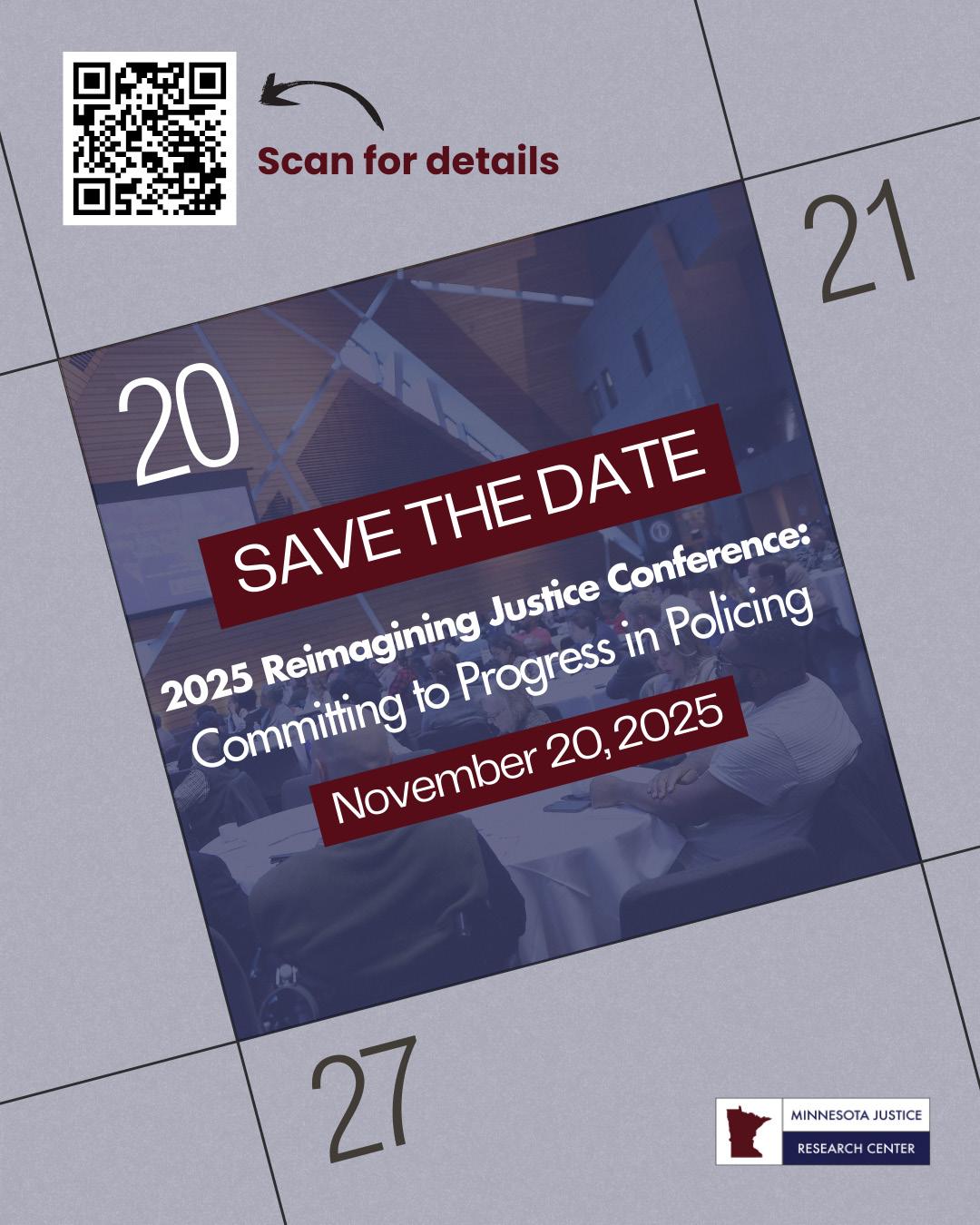
By Aaron Mansfield Assistant Professor of Sport Management, Merrimack College
Being from Buffalo means getting to eat some of the best wings in the world. It means scraping snow and ice off your car in frigid mornings. And it means making a lifelong vow to the city’s NFL franchise, the Bills – for better or worse, till death do us part.
When I grew up in New York’s second-largest city, my community was bound together by loyalty to a football team that always found new ways to break our hearts. And yet at the start of each NFL season, we always found reasons to hope – we couldn’t help ourselves.
Coming from this football-crazed culture, I often wondered about the psychology of fandom. This eventually led me to pursue a Ph.D. in sport consumer behavior. As a doctoral student, I was most interested in one question: Is fandom good for us?
I found a huge body of research on the psychological and social effects of fandom, and it certainly made being devoted to a team look good.
Fandom builds belonging, helps adults make friends, boosts happiness and even provides a buffer against traumatic life events.
So, fandom is great, right?
As famed football commentator Lee Corso would say: “Not so fast, my friend.”
While fandom appears to be a boon for our

mental health, strikingly little research had been conducted on the relationship between fandom and physical health.
So I decided to conduct a series of studies – mainly of people in Western countries – on this topic. I found that being a sports fan can have some drawbacks for physical health, especially among the most committed fans.
Reach for the nachos Playing sports is healthy. But watching them? Not so much.
Tailgating culture revolves around alcohol. Research shows that college sports fans binge drink at significantly higher rates than nonfans, are more likely to do something they later regretted and are more likely to drive drunk. Meanwhile, watch parties encourage being stationary for hours and mindlessly snacking. And, of course, fandom goes hand in
hand with heavily processed foods like wings, nachos, pizza and hot dogs.
One fan told me that when watching games, his relationship with food is “almost Pavlovian”; he craves “decadent” foods the same way he seeks out popcorn at the movies.
Inside the stadium, healthy options have traditionally been scarce and overpriced.
A Sports Illustrated writer joked in 1966 that fans leave stadiums and arenas with “the same body chemistry as a jelly doughnut.”
Little seems to have changed since. One Gen Z fan I recently interviewed griped, “You might find one salad with a plain piece of lettuce and a quarter of a tomato.”
Eating away the anxiety and pain
The relationship between fandom and physical health isn’t just about guzzling beer, sitting for hours on end or
scarfing down hot dogs.
One study analyzed sales from grocery stores. The researchers found that fans consume more calories – and less healthy food – on the day following a loss by their favorite team, a reaction the researchers tied to stress and disappointment.
My colleagues and I found something similar: Fandom induces what’s called “emotional eating.”
Emotions like anger, sadness and disappointment lead to stronger cravings. And this relationship is tied to how your favorite team performs when it matters most. For example, we found that games between rivals and closely contested games yield more pronounced effects. Emotional states generated by the game are also significantly correlated with increased beer sales in the stadium.
High-calorie cultures
In another paper, my co-authors and I found that fans often feel torn between their desire to make healthy choices and their commitment to being a “true fan.”
Every fan base develops its own culture. These unwritten rules vary from team to team, and they aren’t just about wearing a cheesehead hat or waving a Terrible Towel. They also include expectations around drinking, eating and lifestyle.
These health-related norms are shaped by a variety of factors, including the region’s culture, team history and even team sponsorships.
For example, the Cincinnati Bengals partner with Skyline Chili, a regional chain that makes a meat sauce that’s often poured over hot dogs or spaghetti. One Bengals fan I interviewed observed that if you attend a Bengals game, sure, you could eat something else –but a “true fan” eats Skyline. I have two studies in progress that show how hardcore fans typically align their health behaviors with the health norms of their fan base. This becomes a way to signal their allegiance to the team, improve their standing among fellow fans, and contribute to what makes the fan base distinct in the eyes of its members. In Buffalo, for example, tailgating often revolves around alcohol – so much so that Bills fans have a reputation for over-the-top drinking rituals.
And in New Orleans, Saints fans often link fandom to Louisiana food traditions.
As one fan explained: “People make a bunch of fried food or huge pots of gumbo or étouffée, and eat all day – from hours before the game until hours after.”
A new generation of health-conscious fans
The fan experience is shaped by the culture in which it is embedded. Teams actively help shape these cultures, and there’s a business argument to be had for teams to play a bigger role in changing some of these norms.
Gen Z is strikingly health-conscious. They’re also less engaged with traditional fandom.
If stadiums and tailgates continue to revolve around beer and nachos, why would a generation attuned to fitness influencers and “fitspiration” buy in? To reach this market, I think the sports industry will need to promote its professional sports teams in new ways. Some teams are already doing so. The British soccer team Liverpool has partnered with the exercise equipment company Peloton. Another club, Manchester City, has teamed up with a nonalcoholic beer brand as the official sponsor of its practice uniforms. And several European soccer clubs have even joined a “Healthy Stadia” movement, revamping in-stadium food options and encouraging fans to walk and bike to the stadium. For the record, I don’t think the solution is replacing typical fan foods with smoothies and salads. Alienating core consumers is generally not a

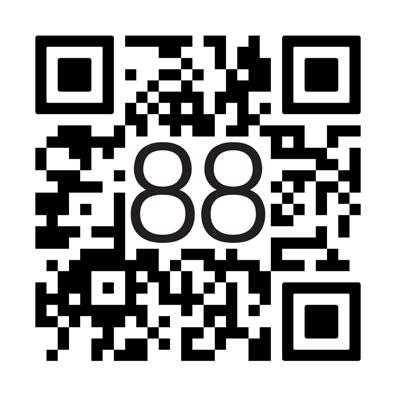

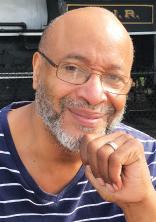
By W.D. Foster-Graham Book Review Editor
Be it North Side, South Side, or Rondo, our communities here in the Twin Cities have a source of pride, something to share with one another and a legacy to pass on to our children. As a Baby Boomer from South Side Minneapolis, I remember what it was like to know (or know of) everybody in the community, Sunday school at St. Peter’s AME, learning from the elders about our history, and spending many a day at the Hosmer Library. These experiences helped to shape the person I am today.
That being said, I bring to you another book that shares love of community, Dr. Artika Tyner’s Violet Loves
Rondo.
Our main character, Violet, comes from a close-knit family, deeply rooted in the Rondo community. Her family, neighbors, and the entrepreneurs share their stories with her, and with her camera, she photographs the various places for posterity.
Violet takes us on a journey/tour of the landmarks, places, activities, and events that make her proud to be part of Rondo, such as the Walker West Music Academy, the Penumbra Theatre, the Hallie Q. Brown Center, Rondo Days, Black Nativity, the Jimmy Lee Rec Center, 2 Scoops, Double Dutch, and historic notables such as Gordon Parks.
Violet is not merely an observer. She is an active participant in this tour, encouraged by the people around her, knowing her history and embracing it while infusing the joy as a child of the Rondo community.
Those of us of a certain age remember the spirit of
what Rondo was prior to, in the spirit of “eminent domain,” the construction of I-94, cutting straight through it, displacing families and destroying businesses. As the outstanding educator and advocate she is, Tyner, through her stories, shows us the resilience of community and a legacy that cannot be erased. The wonderful illustrations by Bilal Karaca for this book reflect Violet’s joy, culminating in the words,
“A splash of history under jazz’s light, In Rondo, our voices fuse through the night.
Violet’s journey is a vibrant stream, A symphony built from our shared dream.” Violet Loves Rondo is available through Amazon and the Planting People Growing Justice website (www.ppgjli.org).
Thank you, Artika, for the lessons of knowing our history and paying it forward for a strong community!
By Alex Volonte Graduate Research and Teaching Assistant in Journalism, University of Florida
In September 2025, podcaster Pablo Torre published an investigation alleging that the NBA’s Los Angeles Clippers may have used a side deal to skirt the league’s strict salary cap rules. His reporting, aired on multiple episodes of “Pablo Torre Finds Out,” focused on star forward Kawhi Leonard.
Leonard, one of the NBA’s most sought-after free agents, signed a four-year, US$176 million contract renewal with the Clippers during the 2021-22 off-season – the maximum allowed under league rules at the time. But Torre reported that in early 2022, Leonard’s LLC, KL2 Aspire, signed a cash and equity deal amounting to roughly $50 million through a brand sponsorship with Aspiration, a now-bankrupt financial technology startup that marketed itself as a climate-friendly bank.
Torre highlighted how the sponsorship coincided with major investments in Aspiration by Clippers owner Steve Ballmer and another team investor. The arrangement, Torre suggested, looked less like a conventional endorsement deal and more like a “no-show” side payment that could have helped the Clippers keep their star without technically violating the salary cap.
Leonard has denied that the partnership was improper, insisting he fulfilled his
contractual obligations. The Clippers and Ballmer have also rejected claims of wrongdoing.
Torre’s reporting nevertheless had an immediate impact. Major outlets picked up the story, Aspiration’s bankruptcy filings drew renewed scrutiny, and the NBA announced it was investigating the matter.
At the University of Florida’s College of Journalism & Communications, part of my research involves unpacking the importance of decentralized networks of local outlets that cover stories from underrepresented areas of the country.
I see Torre’s work as a clear example of the growing need for this kind of bottom-up, citizen journalism – particularly given media industry trends.
An eroding fourth estate
Watchdog journalism is supposed to hold power to account.
This is sometimes referred to as the “fourth estate.” A term that dates back to the 17th century, it reflects the idea that an independent press is supposed to act as a fourth pillar of power, alongside the three traditional branches of modern democracies – legislative, executive and judicial.
Proudly independent from political or financial influence, fourth estate news media has traditionally demonstrated a public service commitment to exposing corruption, encouraging debate, highlighting issues that are important and forcing leaders to address those issues.
The need for watchdog journalism appears more urgent than ever.
In the Western world,
Goodbye, rental.
Hello, home.
We’re Building a Better Home-Buying Experience.
From hammers and walls to stronger futures, we’ve always been about housing. Now, we’re making homeownership easier than ever.
Start your journey with us Visit www.tchabitat.org.

with authoritarianism on the rise, the fourth estate is experiencing widespread threats. Reporters Without Borders’ latest World Press Freedom Index found that global press freedom reached an all-time low in 2025. For the first time, it classified the situation as “difficult.”
Meanwhile, market forces and profit motives have weakened the media’s role in upholding democratic checks and balances. Fierce competition for clicks, eyeballs and ad revenue impacts the type of content and stories that commercial outlets tend to focus on.
There appears to be less and less of a financial incentive to put in the time, resources and effort required for deep investigative reporting. It’s just not worth the return on that investment for commercial outfits.
A full-court press In the U.S., the Trump administration and media consolidations have further weakened the press’s ability to serve as a check on those in power.
Over the past year, two major TV networks — ABC and CBS — reached settlements for separate lawsuits brought forward by President Donald Trump tied to editorial choices on their broadcast programming. Needless to say, both decisions create significant precedents that could prove consequential for journalistic integrity and independence.
In July 2025, the GOP-led Congress stripped over $1 billion from the Corporation of Public Broadcasting, dealing a blow to public nonprofit outlets NPR, PBS and their local affiliates.

More recently, Washington Post columnist Karen Attiah lost her job after speaking out against gun violence on social media in the wake of Charlie Kirk’s assassination.
From a structural standpoint, the U.S. media ownership landscape has, for decades, been plagued by consolidation. Media channels have become merely one slice of the massive asset portfolios of the conglomerates that control them.
It’s probably fair to say that producing costly and burdensome watchdog journalism isn’t exactly a priority for busy executives at the top of these holding companies.
What about local media?
Independent local outlets are a dying breed, too. Studies have shown that news deserts – areas with little or no local coverage – are multiplying across the U.S. This has dire consequences for democratic governance: News deserts often correlate with lower civic engagement, reduced voter turnout and less accountability for business and political leaders.
What’s more, fewer local journalists means less scrutiny of local governments, which undermines transparency and enables corruption.
For these reasons, more readers seem to be getting their news from social media and podcasts. In fact, according to a new Pew Research Center report, 1 in 5 Americans get their news from TikTok alone. And in its 2025 Digital News Report, the Reuters Institute noted that “engagement with traditional media sources such as TV, print, and news websites continues to fall, while dependence on social media, video platforms, and online aggregators grows.”
Sports From 10
sound business strategy. I think it’s reasonable, however, to suggest sports teams might add more healthy options and carefully evaluate the signals they send through sponsorships.
As one fan I recently interviewed said: “The NFL has had half-assed efforts like Play 60” – a campaign encouraging kids to get at least 60 minutes of physical activity per day – “while also making a ton of money from beer, food and, back in the day, cigarette advertisements. How can sports leagues seriously expect people to be healthier if they promote unhealthy behaviors?”
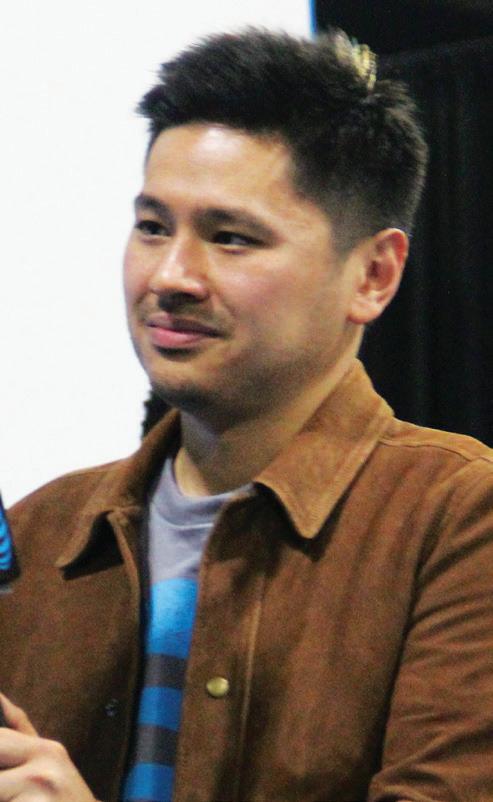
Credit: Wikipedia Television host Sportswriter Pablo S. Torre
With this in mind, the U.S. government’s latest framework for a deal for TikTok’s parent company, ByteDance, to sell the social media platform’s stateside operations to a consortium of American investors takes on even more significance. Many of these investors are allies of Trump. They’ll get to control the algorithm – meaning they’ll be able to influence the content that users see.
Bottom up
At the same time, social media has also allowed independent journalists such as Torre to find an audience. Granted, with past journalistic stints at both Sports Illustrated and ESPN, Torre is not exactly a pure outsider. Yet he’s far from a household name, with fewer than 200,000 podcast subscribers.
Luckily, he’s by no means the only independent journalist serving as a citizen watchdog.
In January 2025, freelance journalist Liz Pelly published her book “Mood Machine,” which details her investigation into Spotify’s dubious financial practices. Through her research and reporting, she al-
Today’s consumers want to support brands that reflect their values. This is particularly true for Gen Zers, many of whom are savvy enough to see through hollow campaigns and quick to reject hypocrisy. In the long run, I think this type of dissonance – sandwiching a Play 60 commercial between ads for Uber Eats and Anheuser-Busch – will prove counterproductive.
I, as much as anyone else, understand what makes fandom special – and yes, I’ve eaten my share of wings during Bills games. But public health is a pressing concern, and though the sports industry is well-positioned to address this issue, fandom isn’t helping. Actually, my research suggests it’s having the opposite effect. Striking the balance
leges that the music technology company conspired to suppress legitimate royalty payments to artists.
Andrew Callaghan of Channel 5 News fame on YouTube runs one of the largest crowdfunded independent newsrooms in the world. His exclusive interview with Hunter Biden in July 2025 got him a type of access that established mainstream media couldn’t get.
In 2020, Canadian siblings Sukh Singh and Harleen Kaur founded GroundNews, an online platform providing news aggregation, curation and rigorous fact-checking. All Sides and Straight Arrow News are similar bottom-up projects designed to expose media bias and fight misinformation.
Meanwhile, the nonprofit media outlet ProPublica has published award-winning investigative journalism through a distributed network of local reporters. Their “Life of the Mother” series, which explored the deaths of mothers after abortion bans, earned them multiple awards while prompting policy changes at federal and state levels.
All have surfaced meaningful stories worth bringing to light. Historically, these types of stories were the purview of newspapers of record. Today, underground sleuths might be among the last bulwarks to abuses of power. The work isn’t easy. It certainly doesn’t pay well. But I think it’s important, and someone has to do it.
Disclosure statement Alex Volonte does not work for, consult, own shares in or receive funding from any company or organisation that would benefit from this article, and has disclosed no relevant affiliations beyond their academic appointment.
I’m advocating will be tricky, but the sports industry is filled with bright problem-solvers. In the film “Moneyball,” Brad Pitt’s character, Billy Beane, famously says sports teams must “adapt or die.” He was referring to the need for baseball teams to integrate analytics into their decision-making. Professional sports teams eventually got that message. Maybe they’ll get this one, too.
Disclosure statement Aaron Mansfield does not work for, consult, own shares in or receive funding from any company or organisation that would benefit from this article, and has disclosed no relevant affiliations beyond their academic appointment.

















